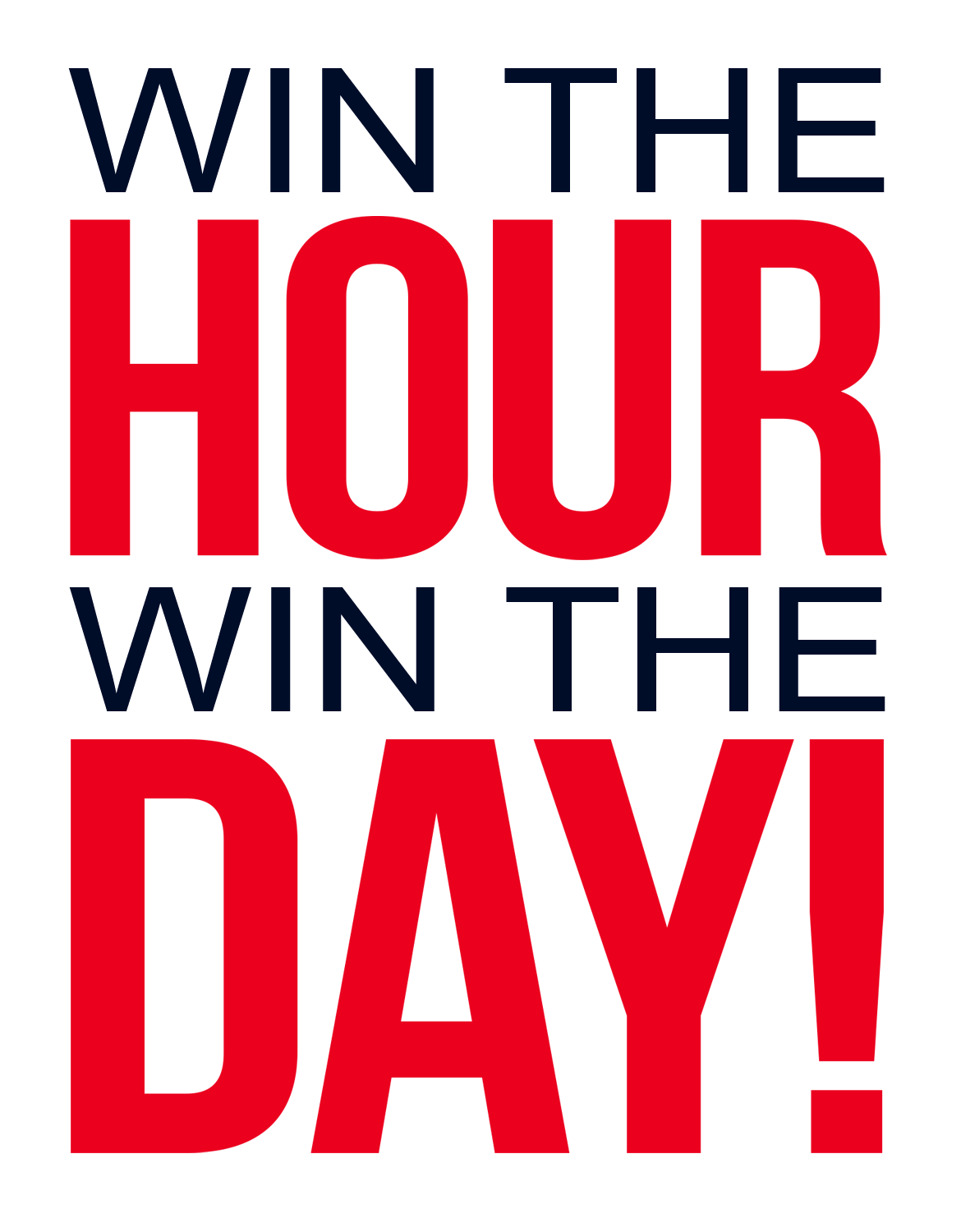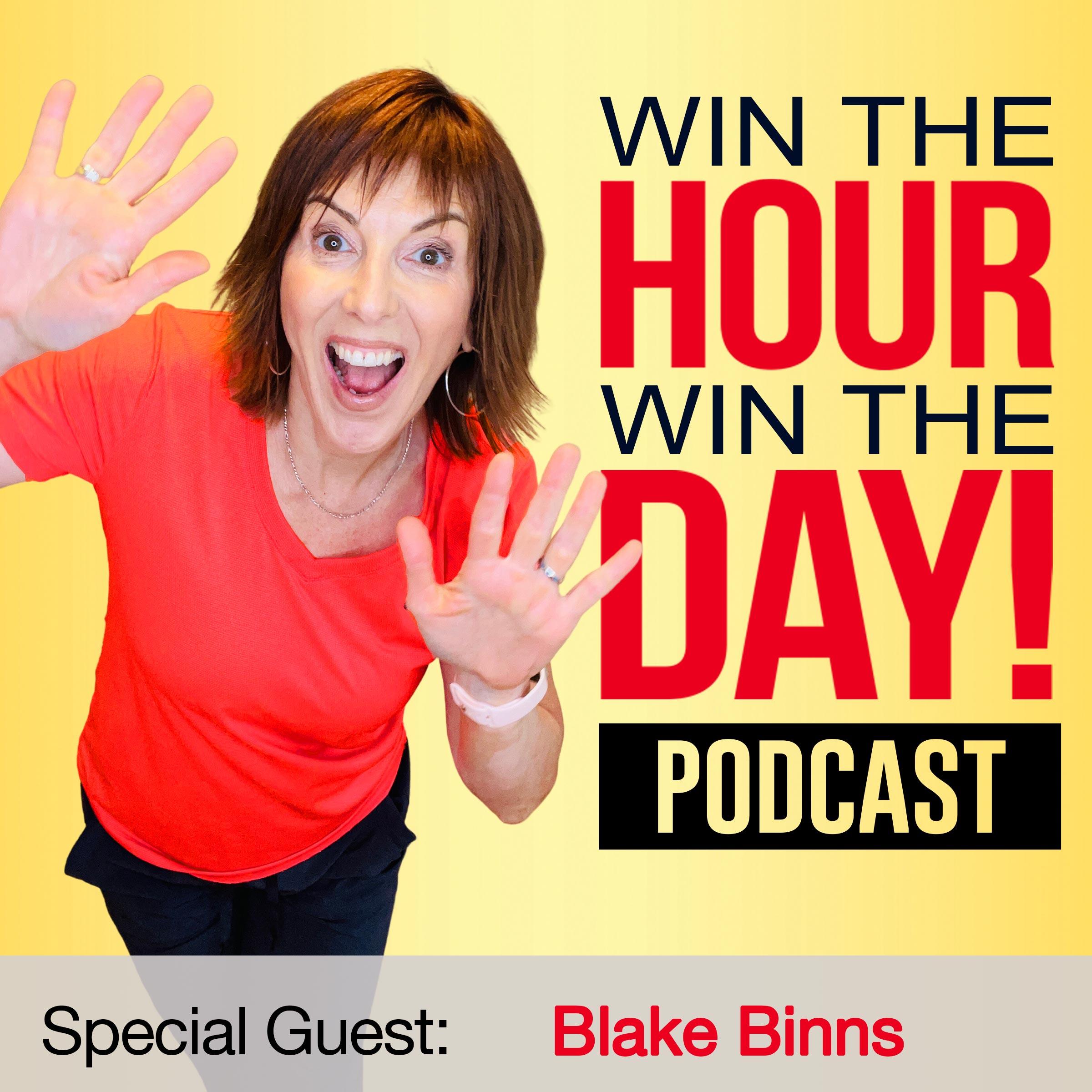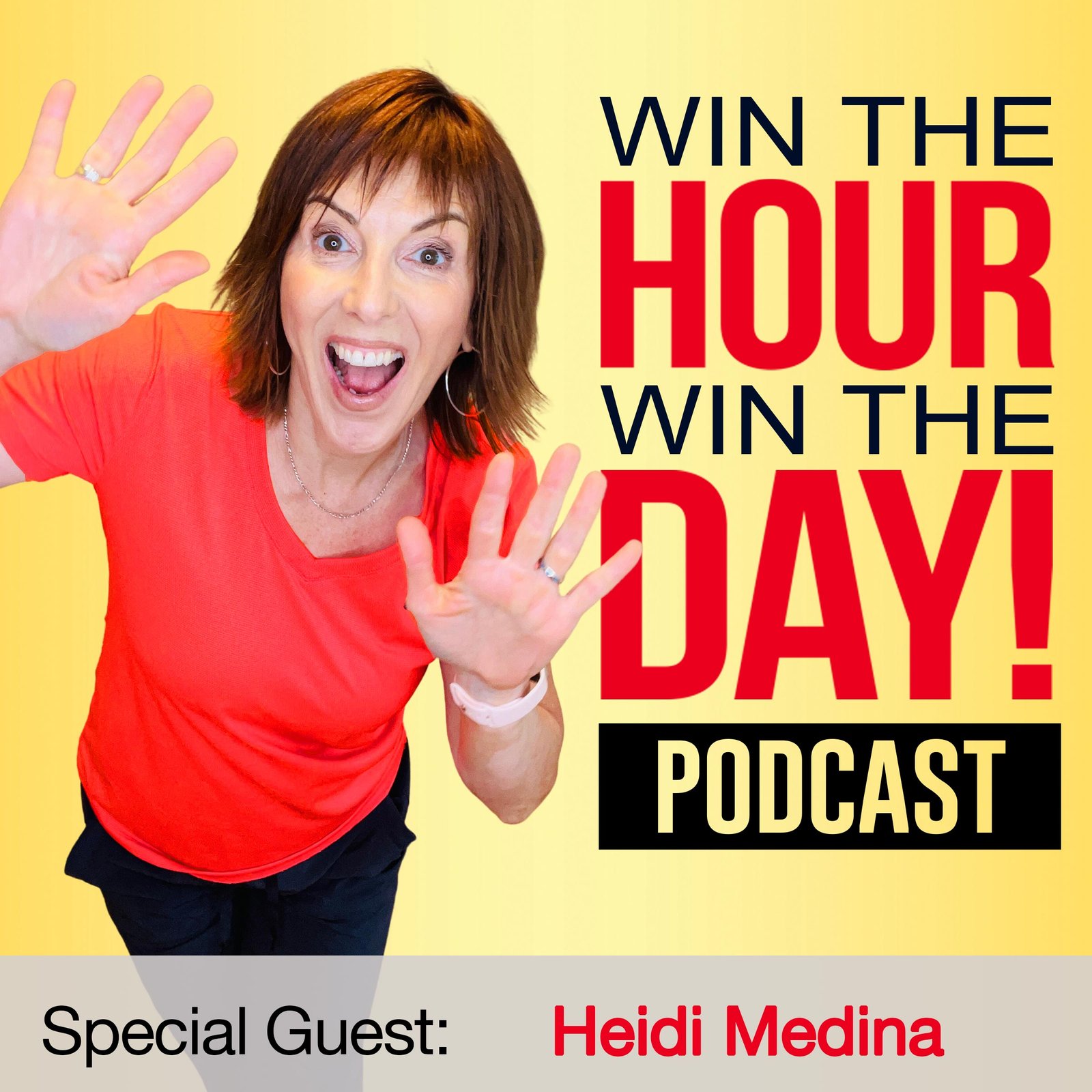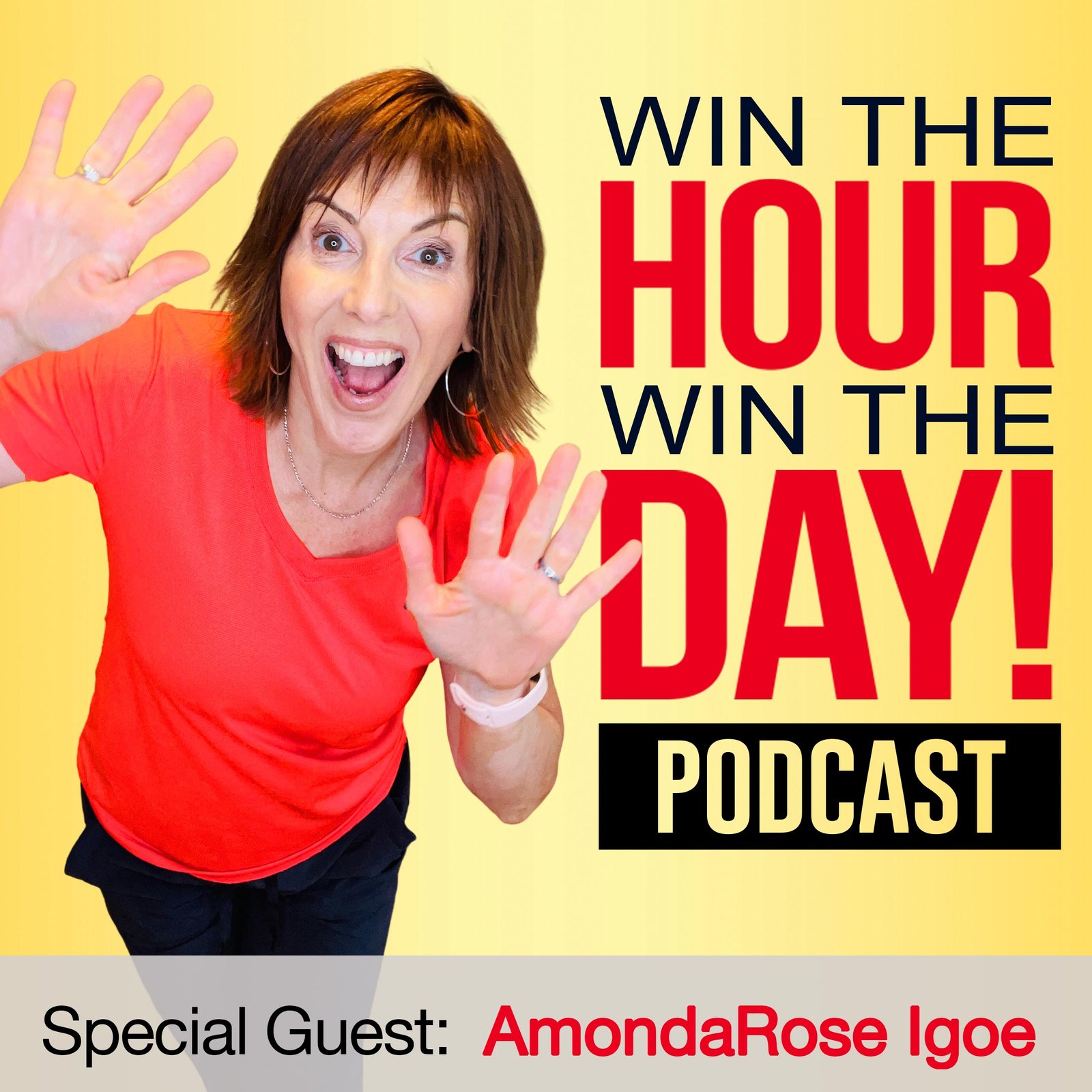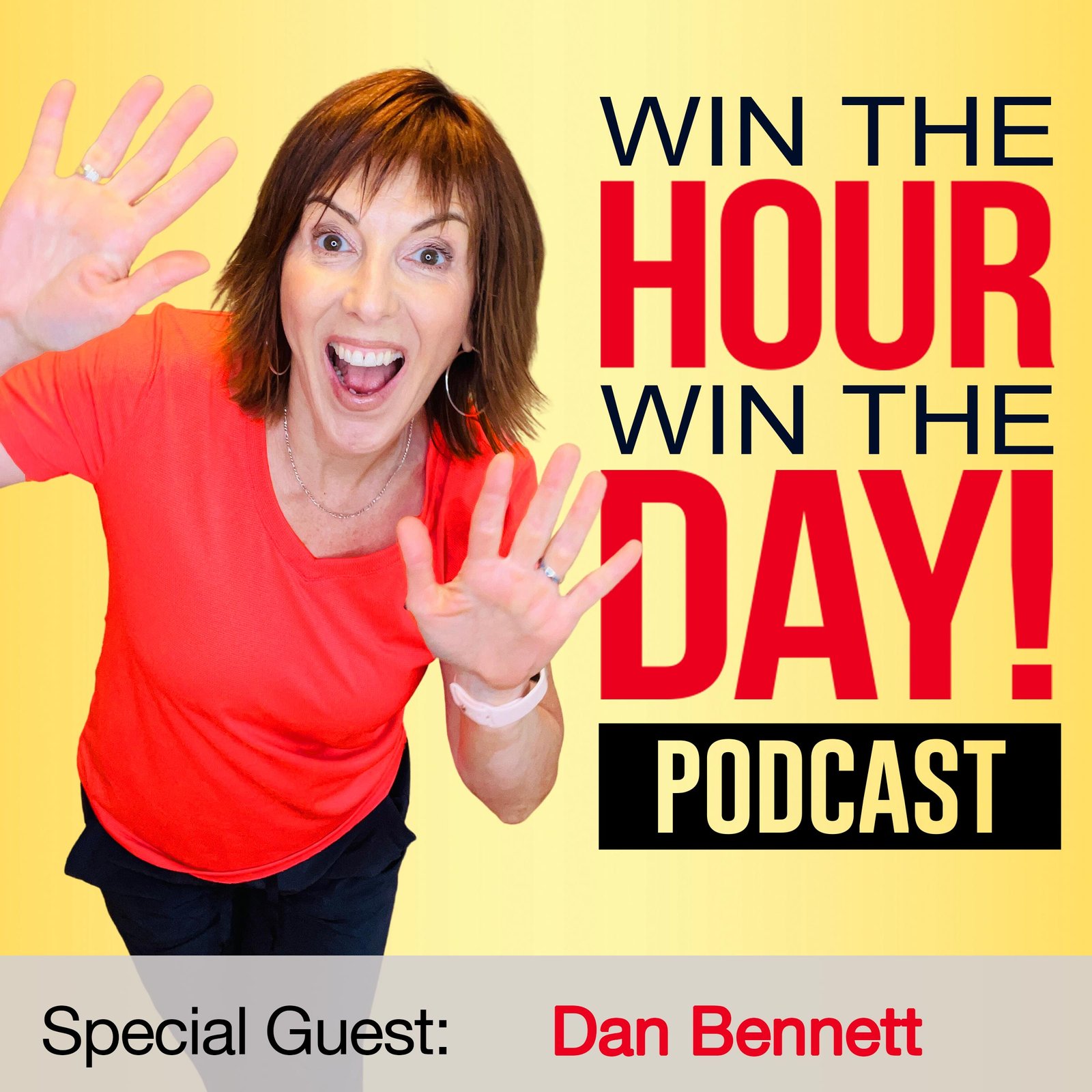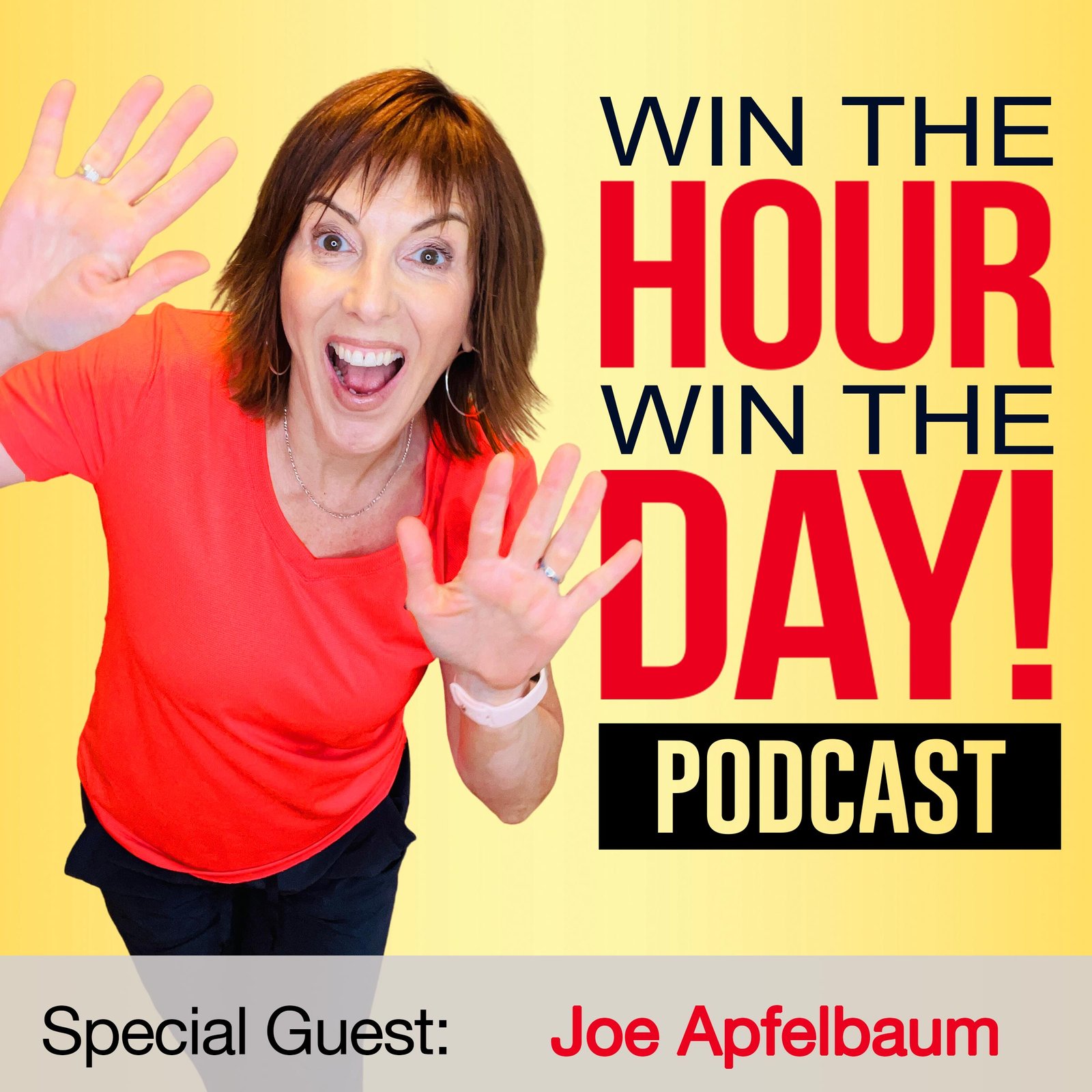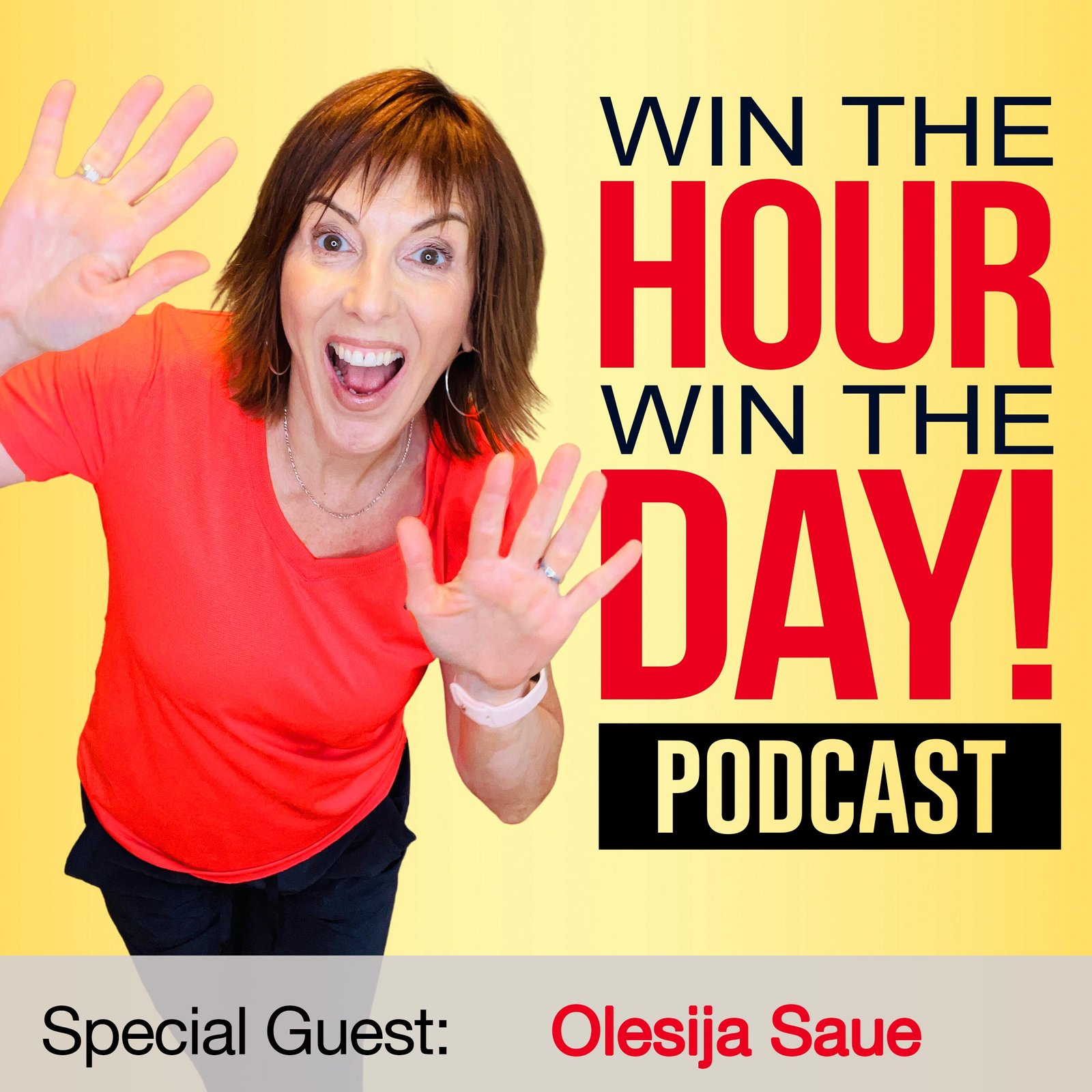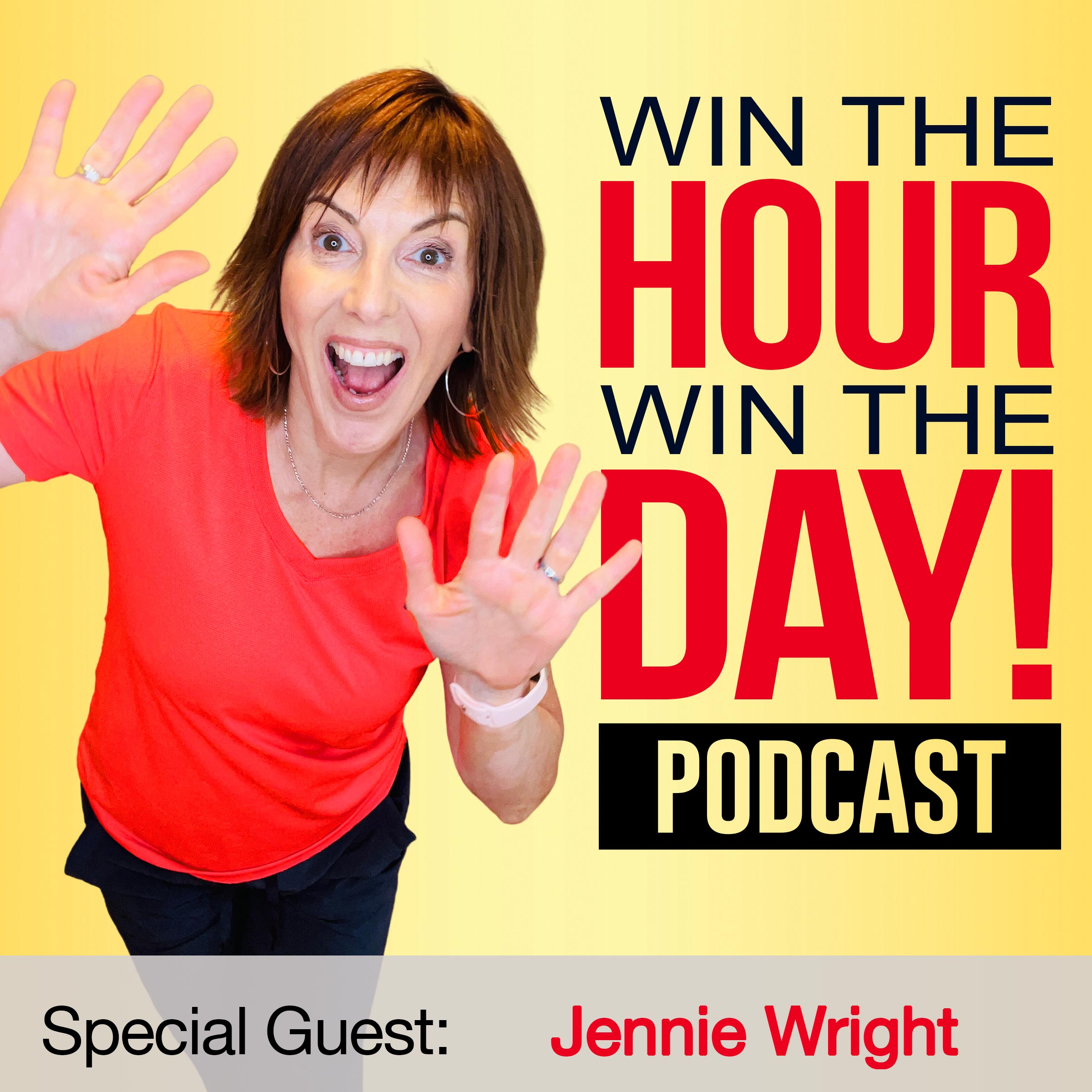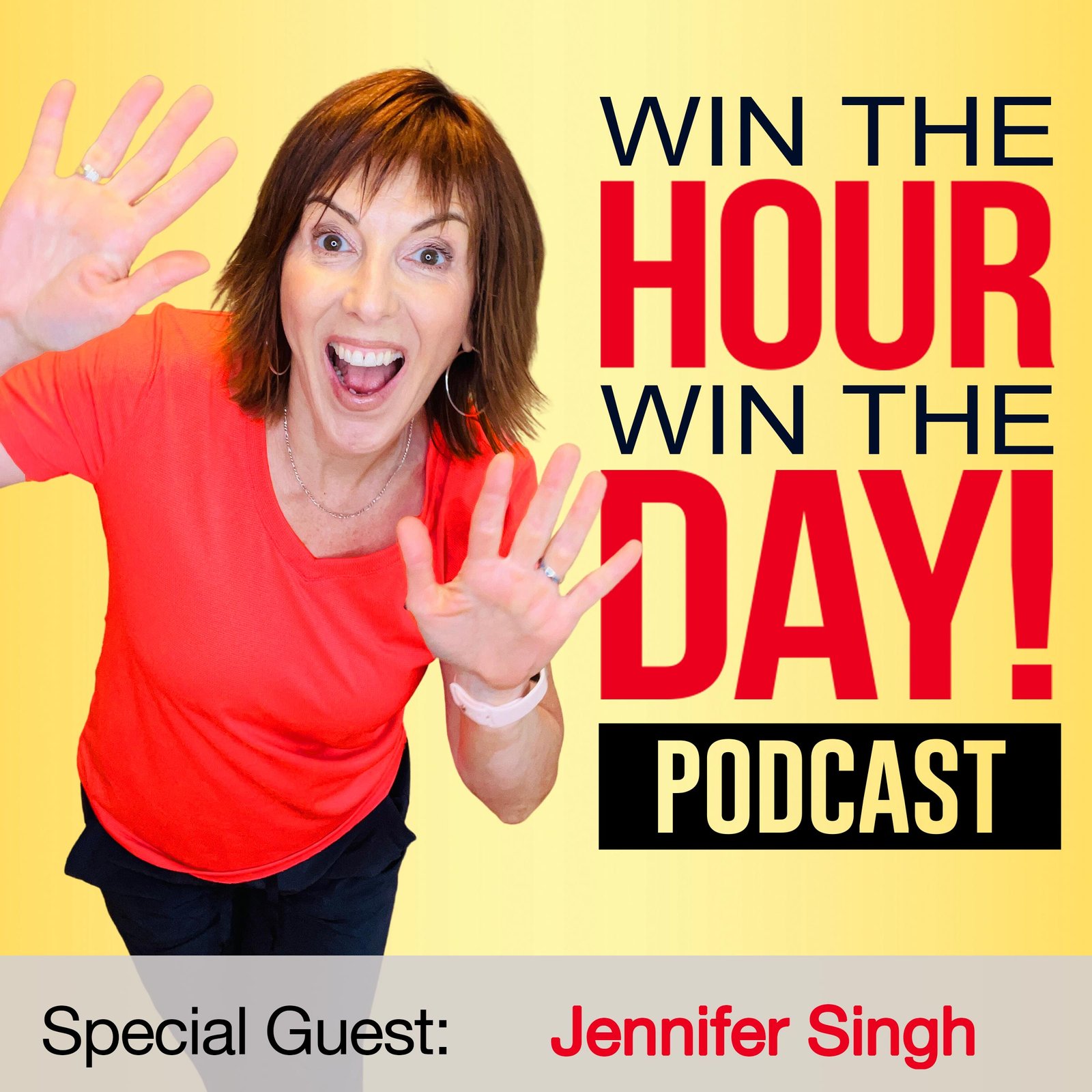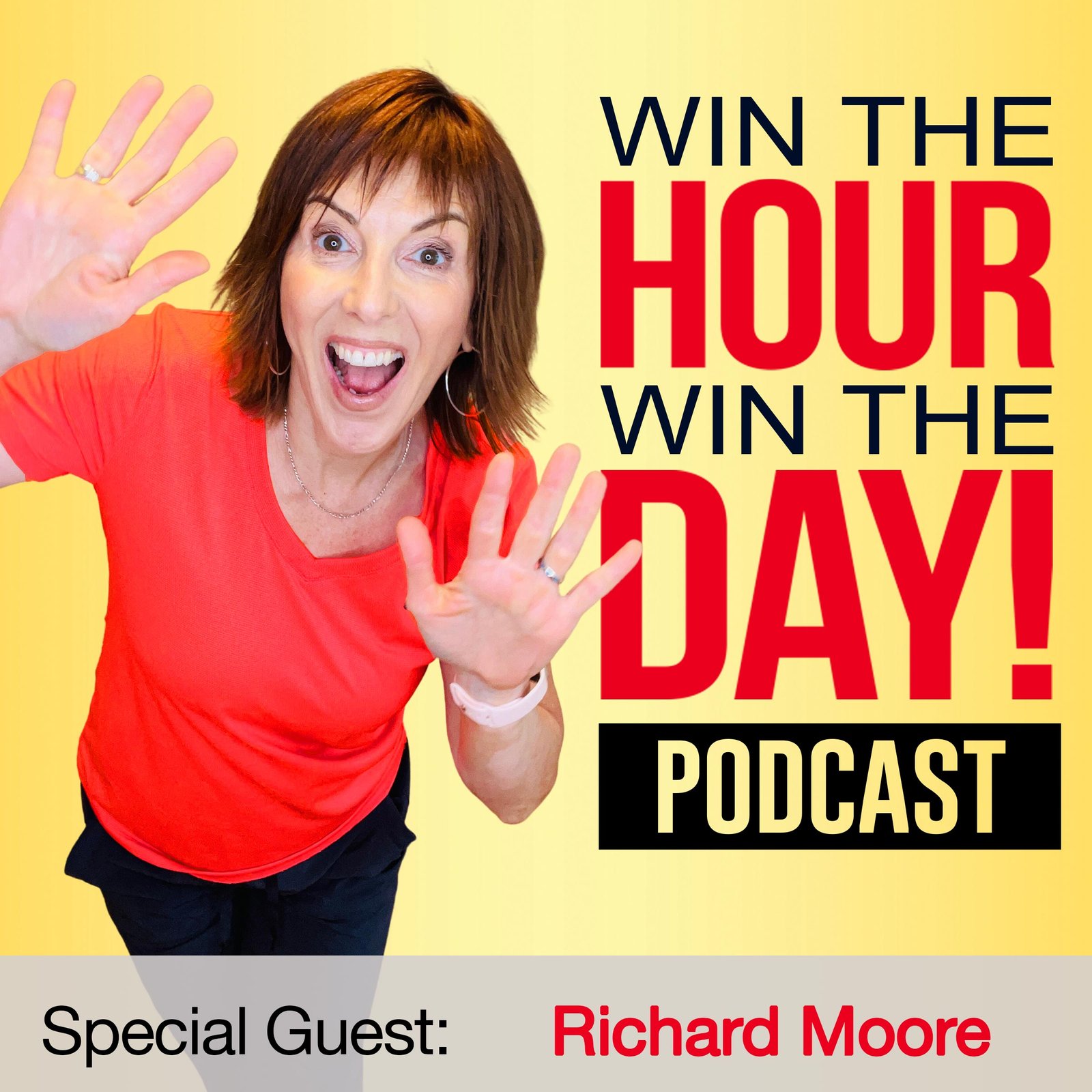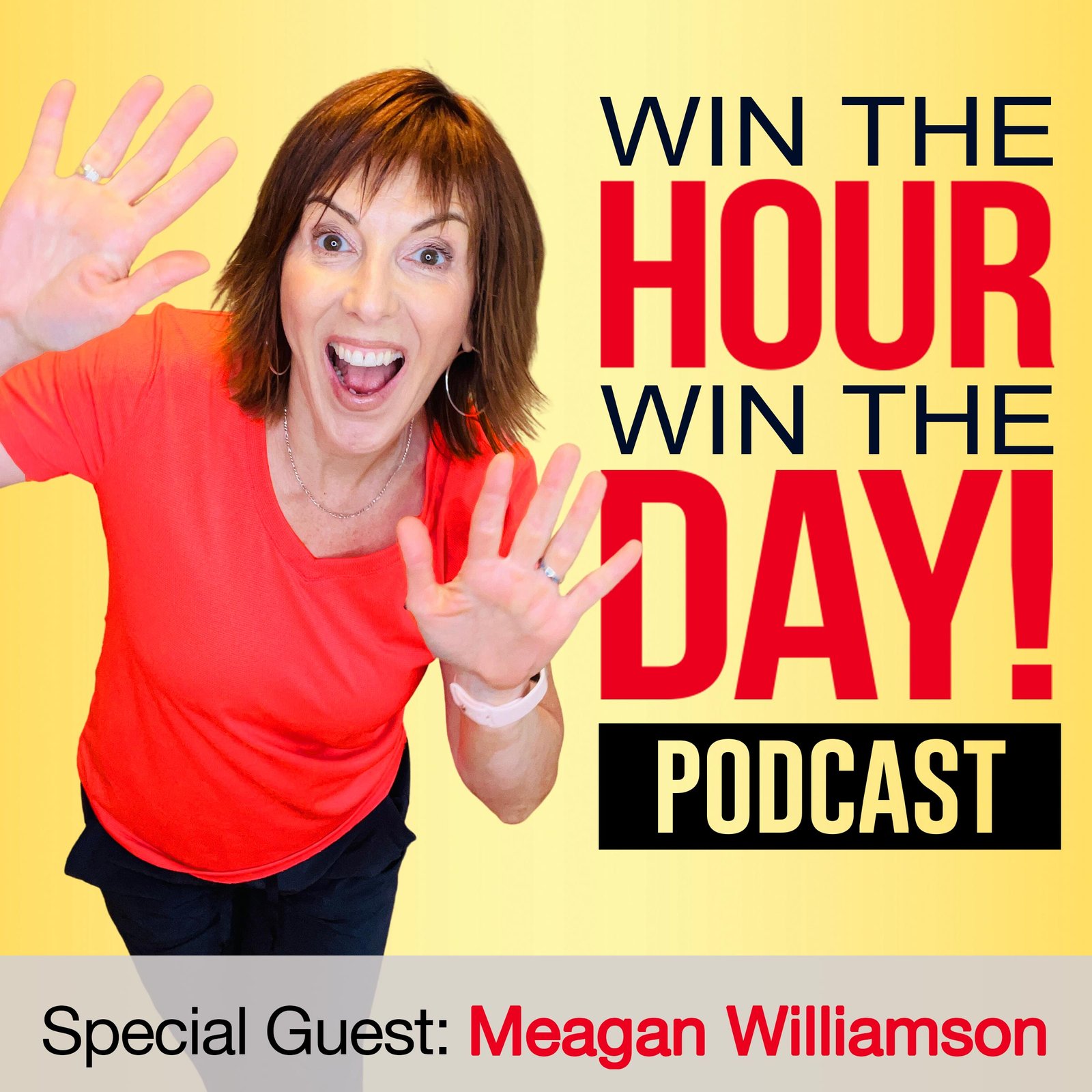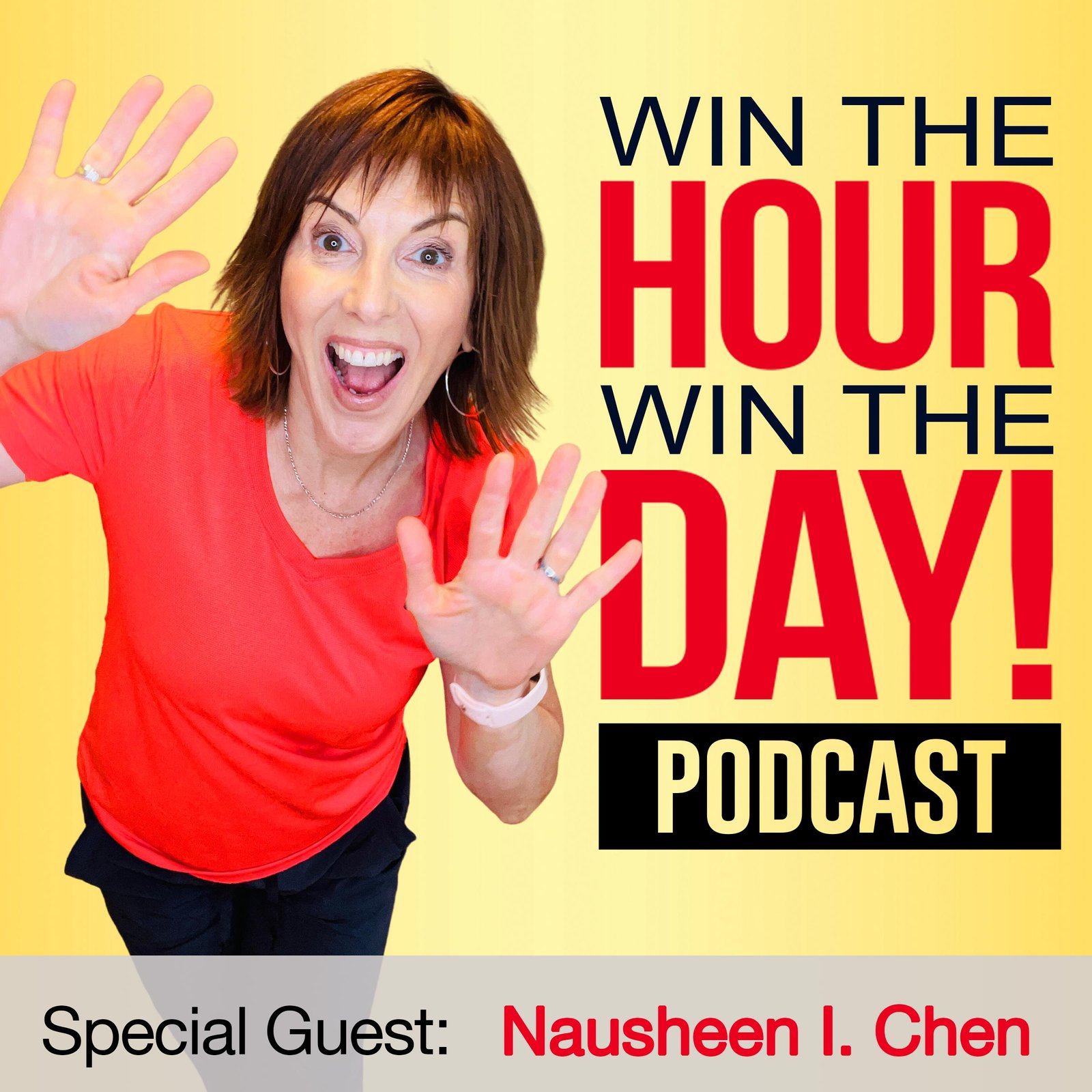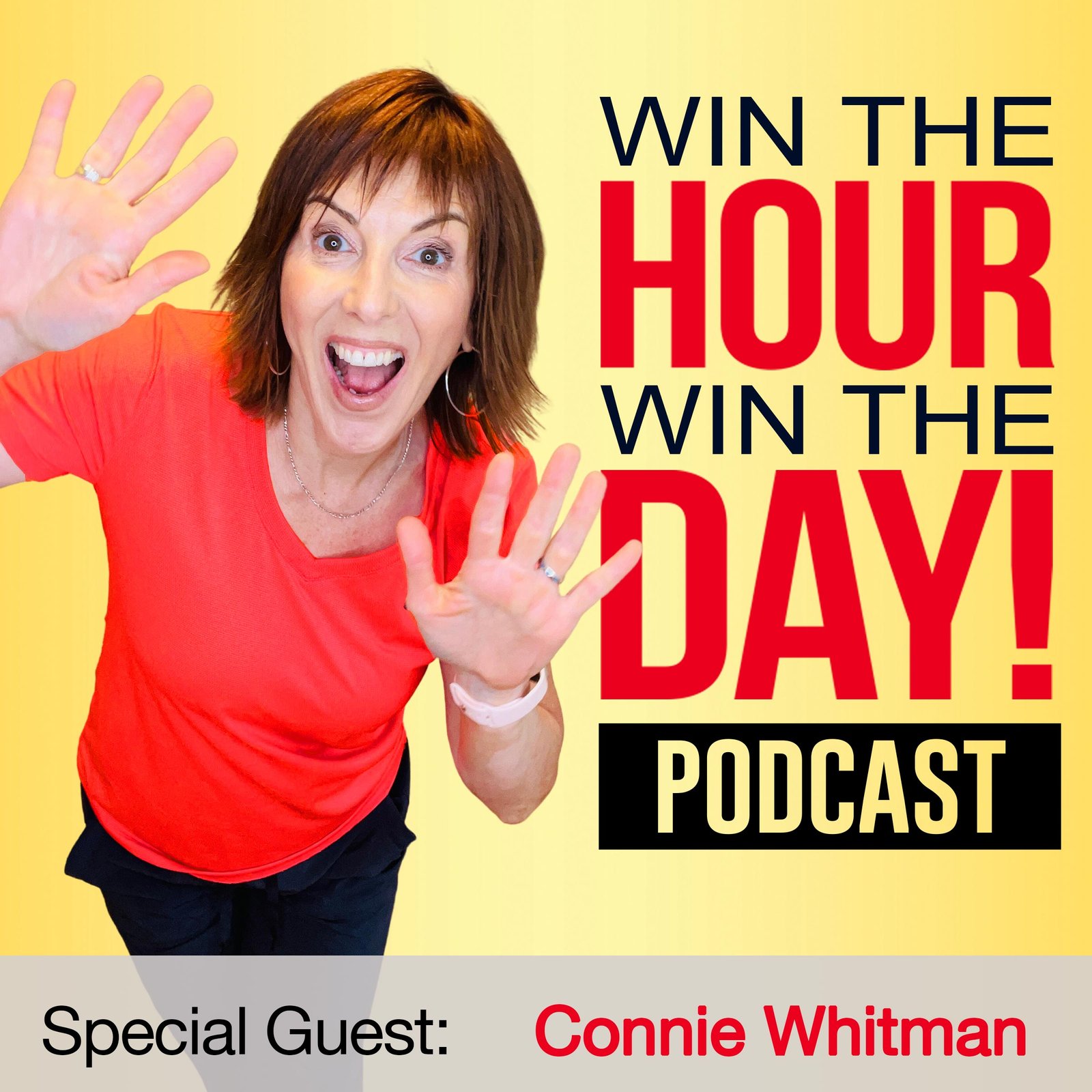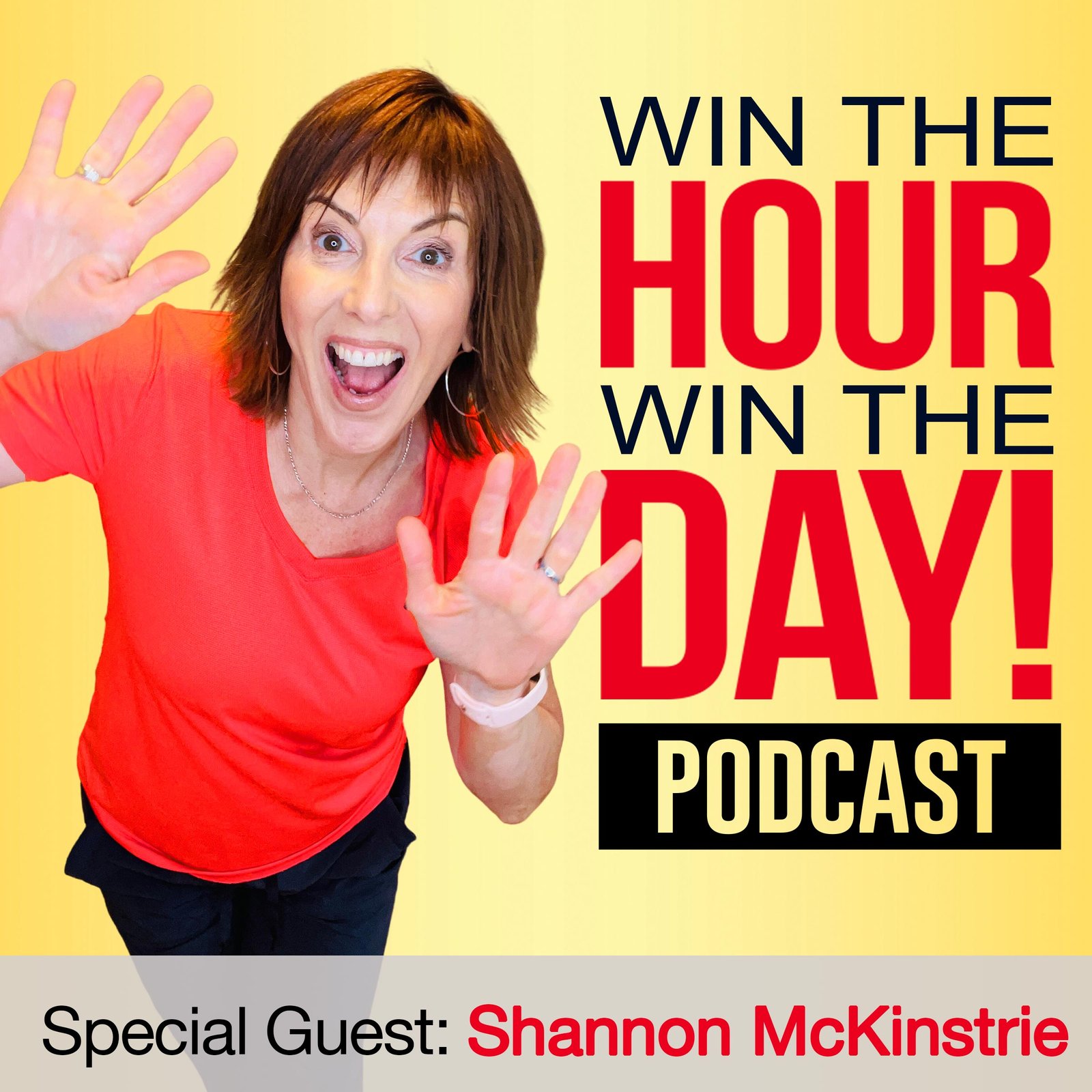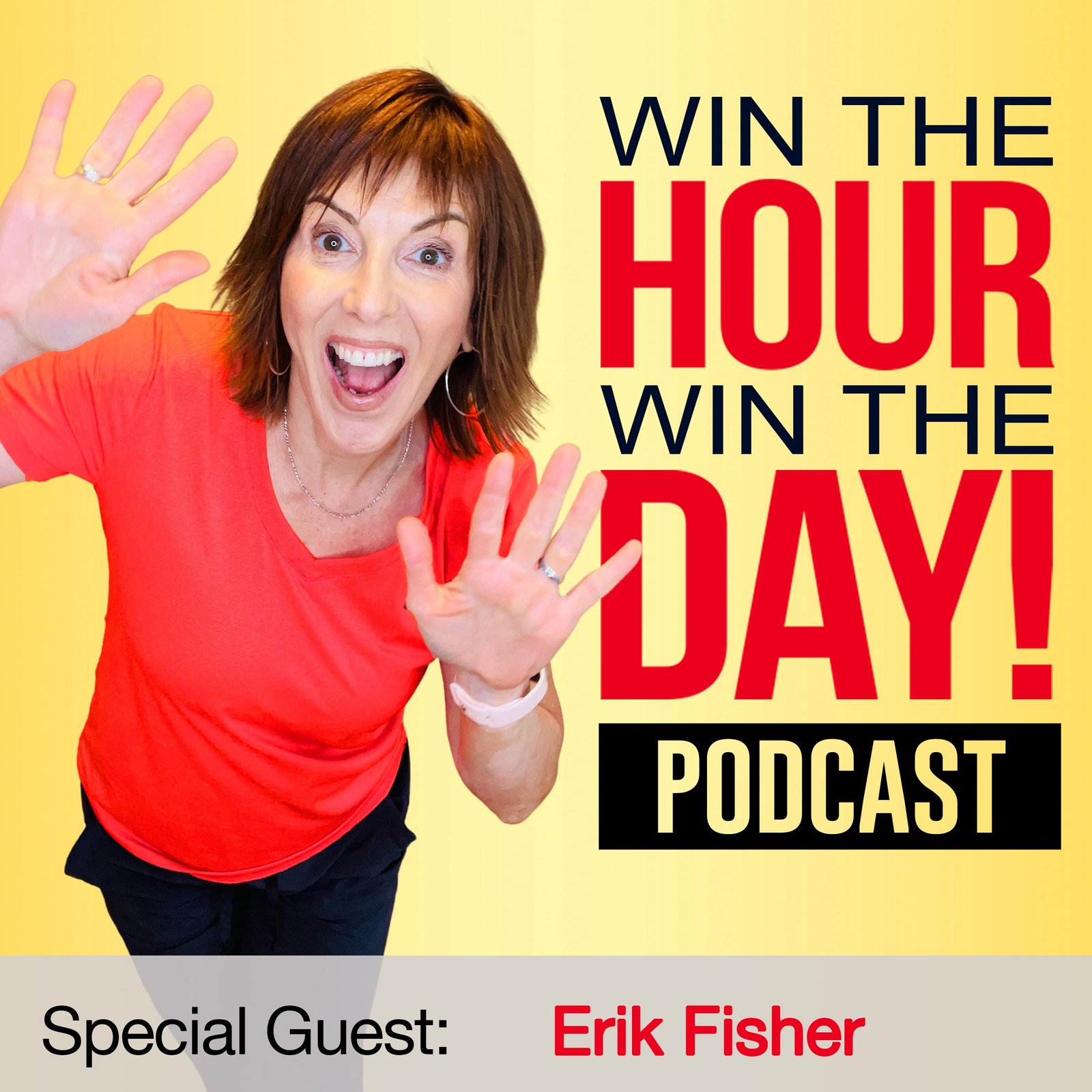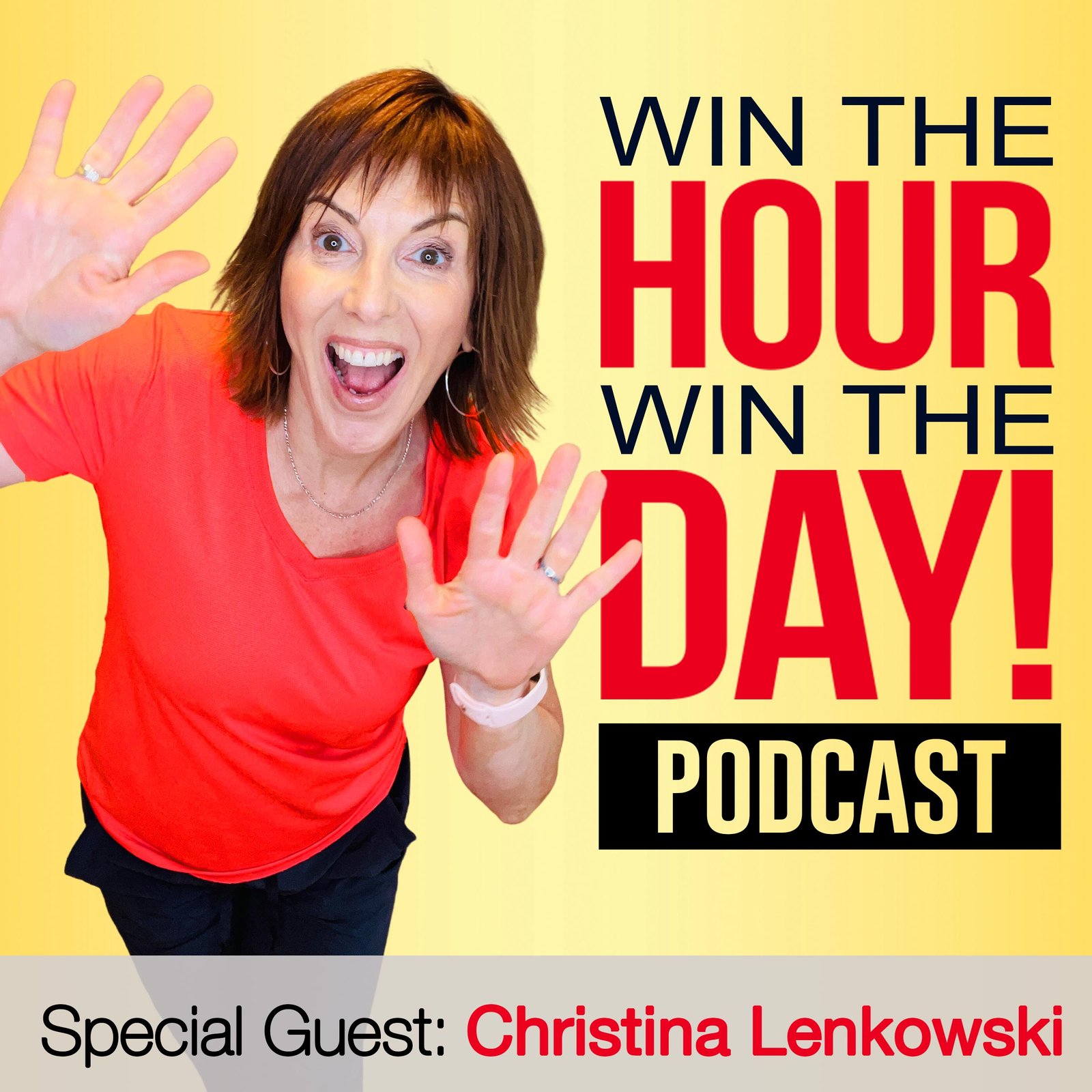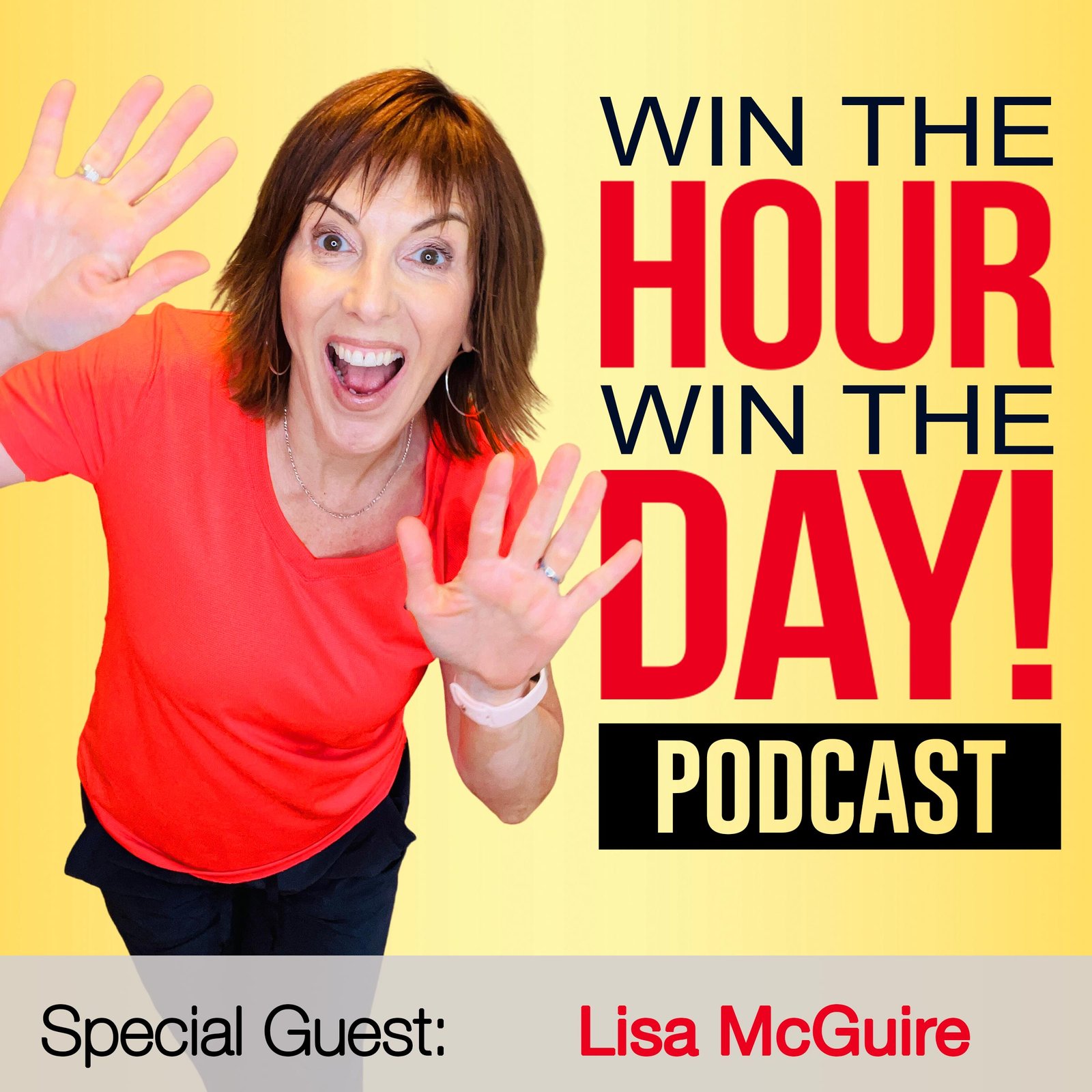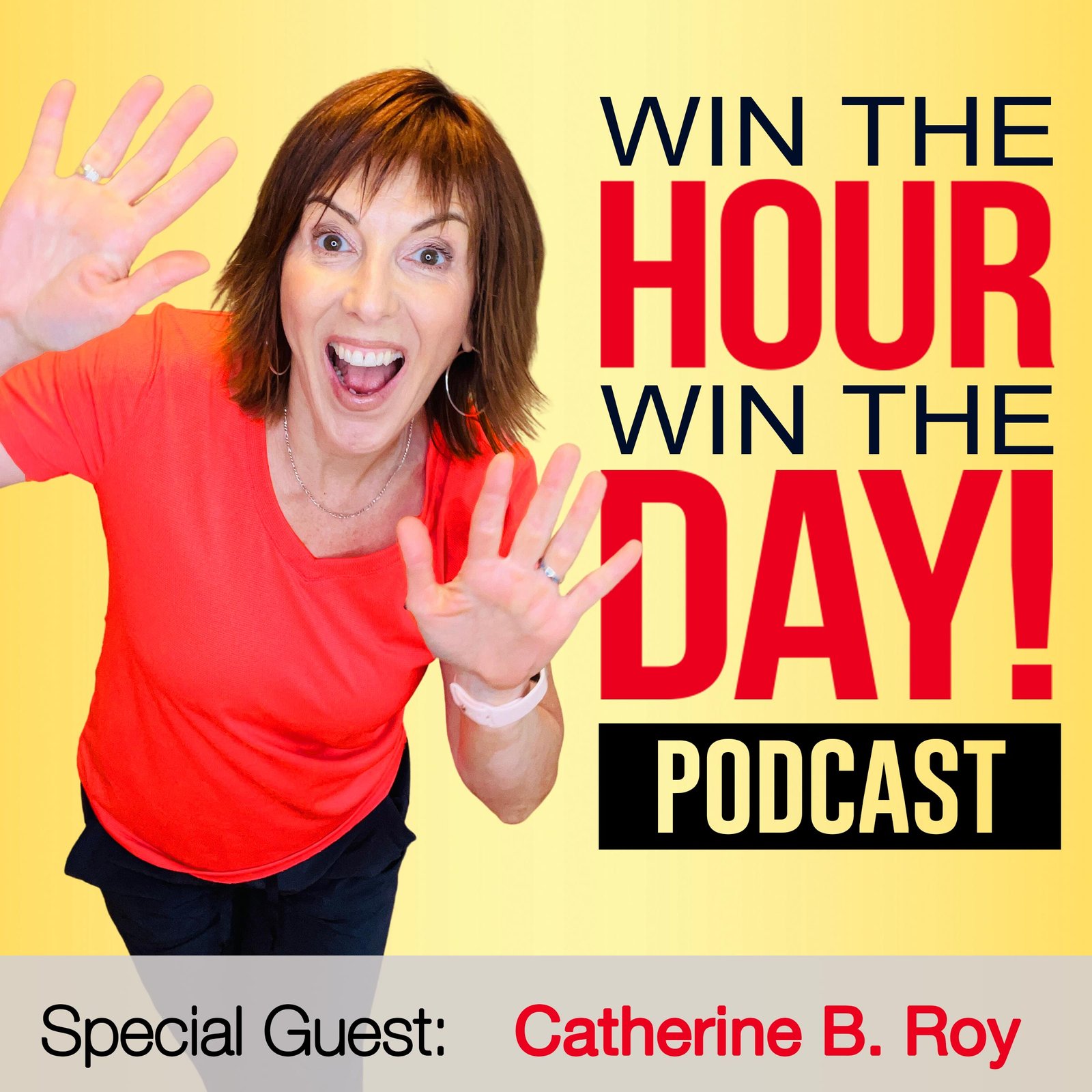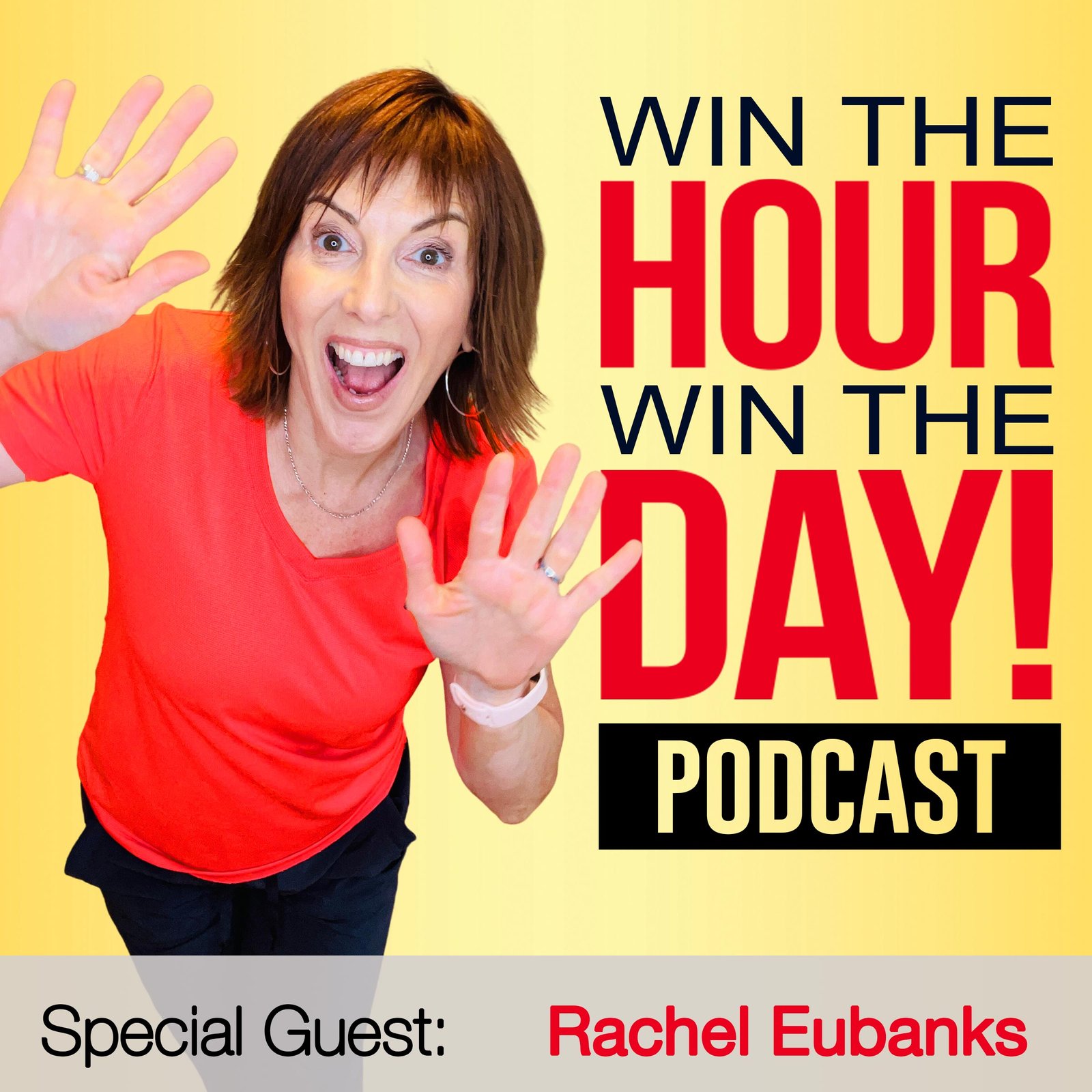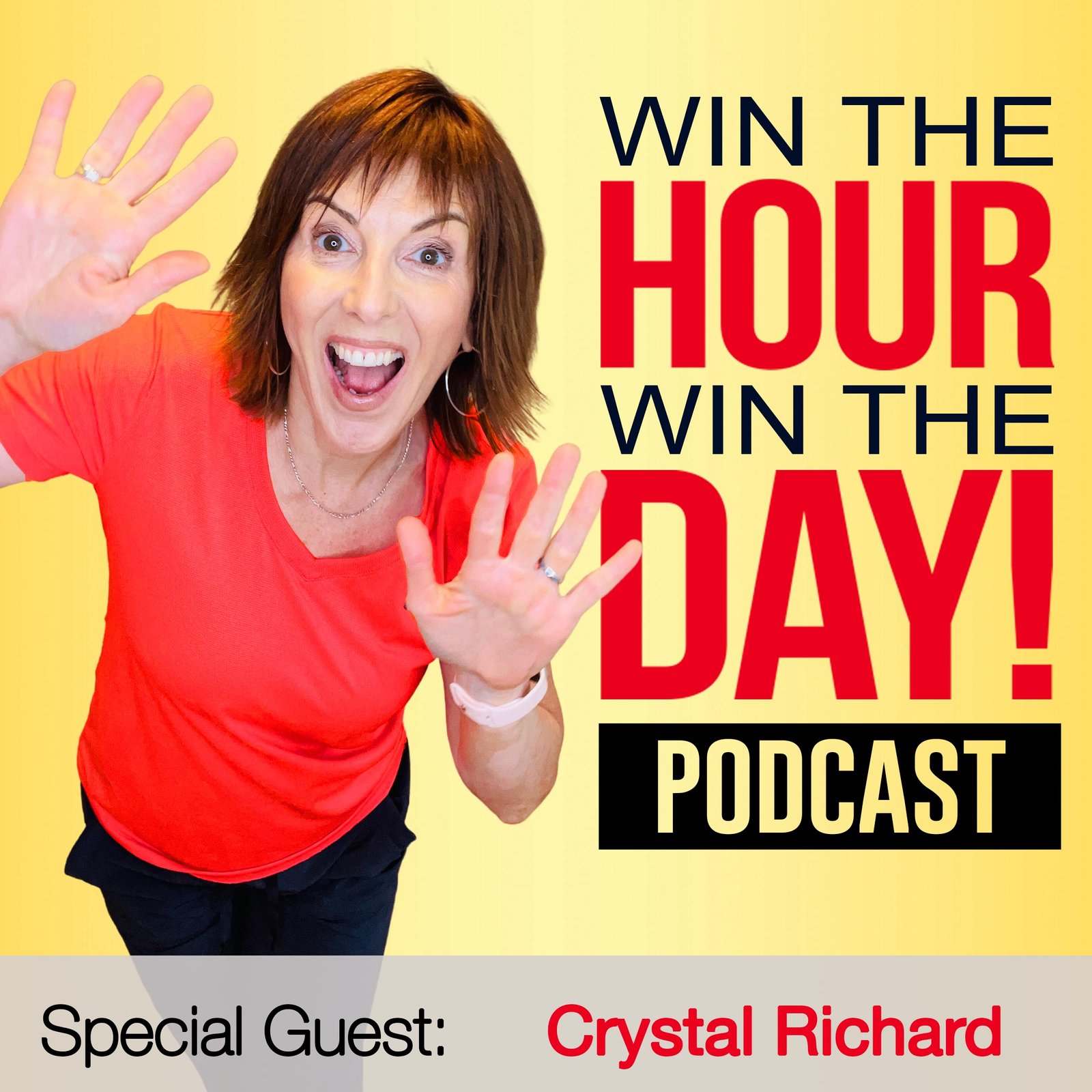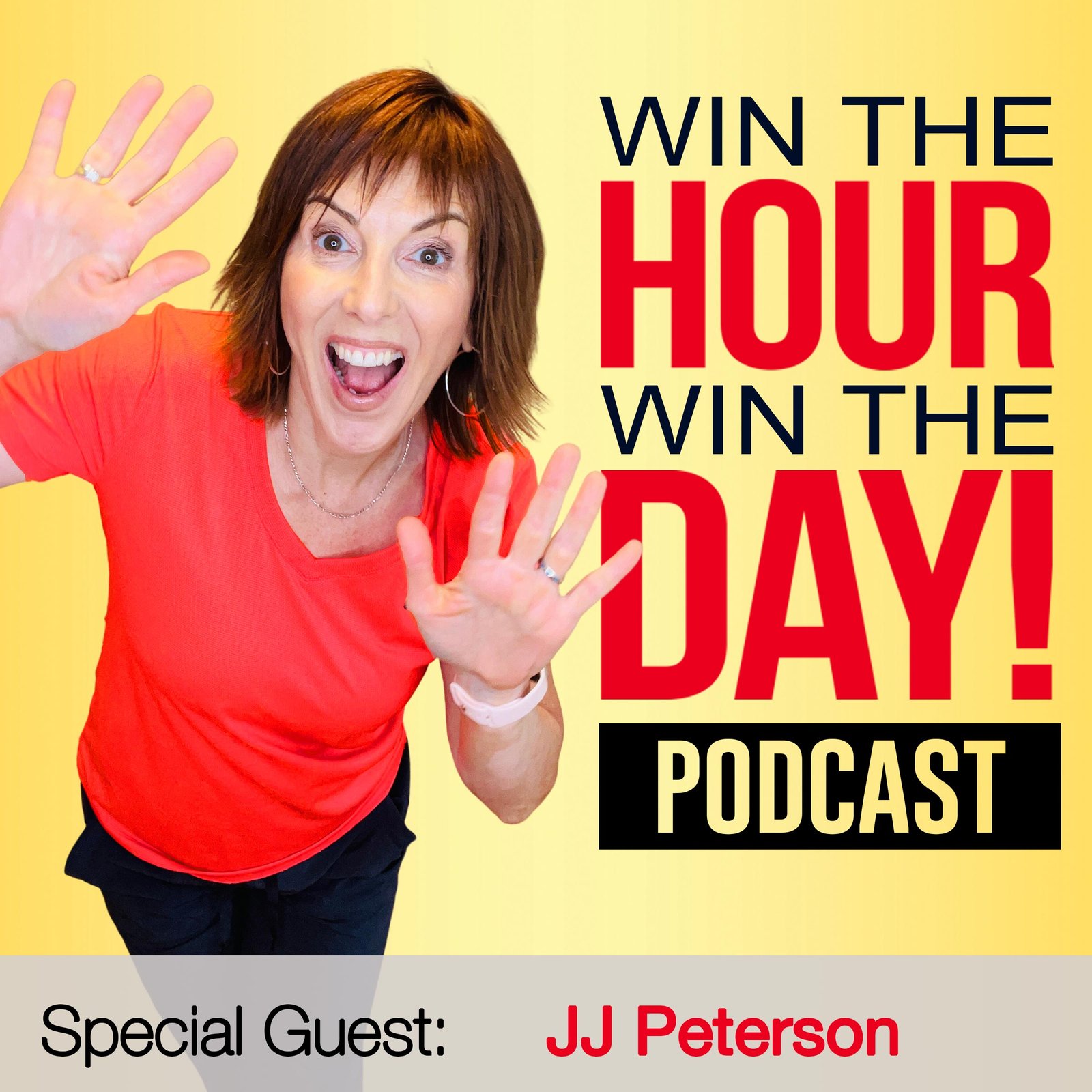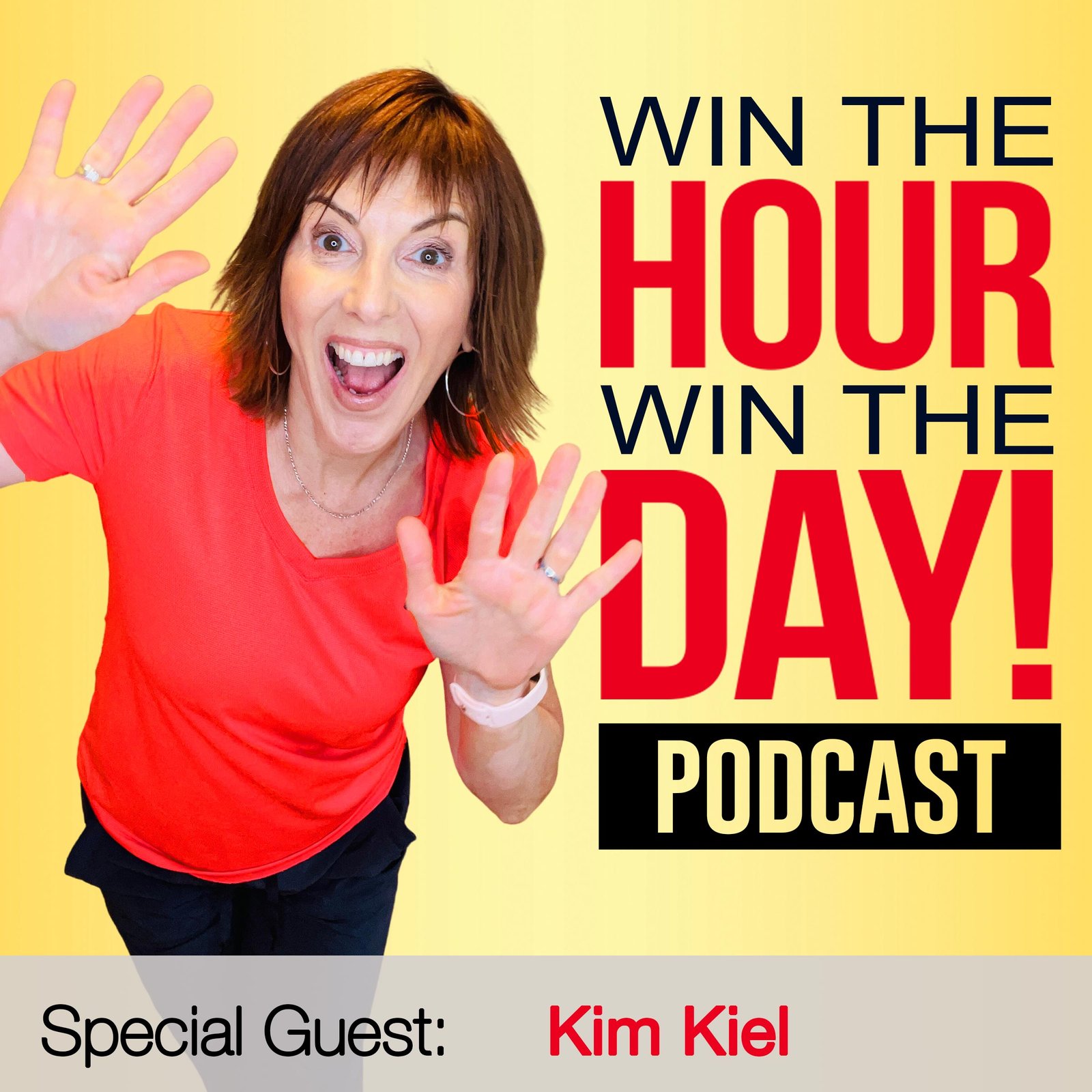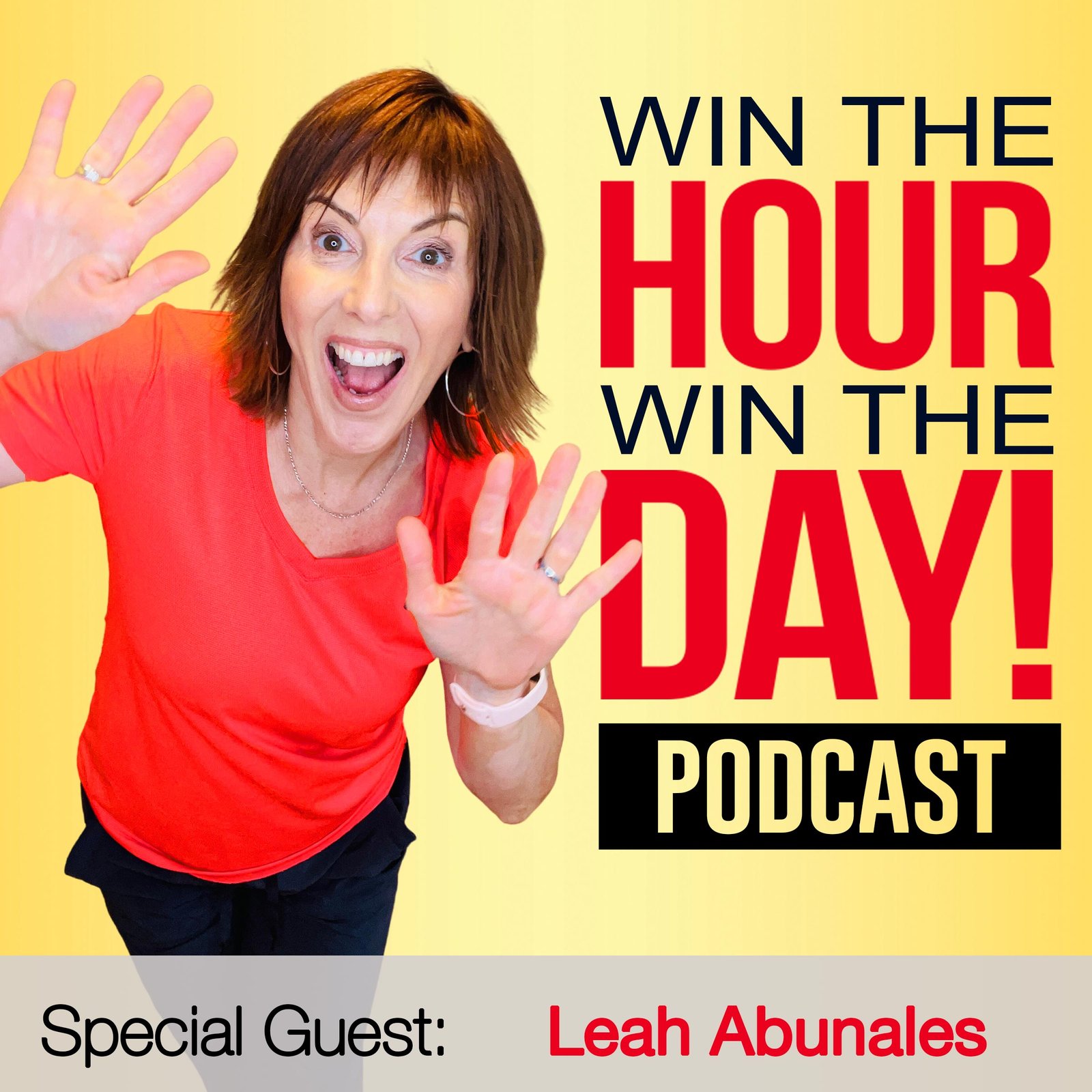Episode Summary This week’s episode of Win The Hour, Win The Day Podcast is...
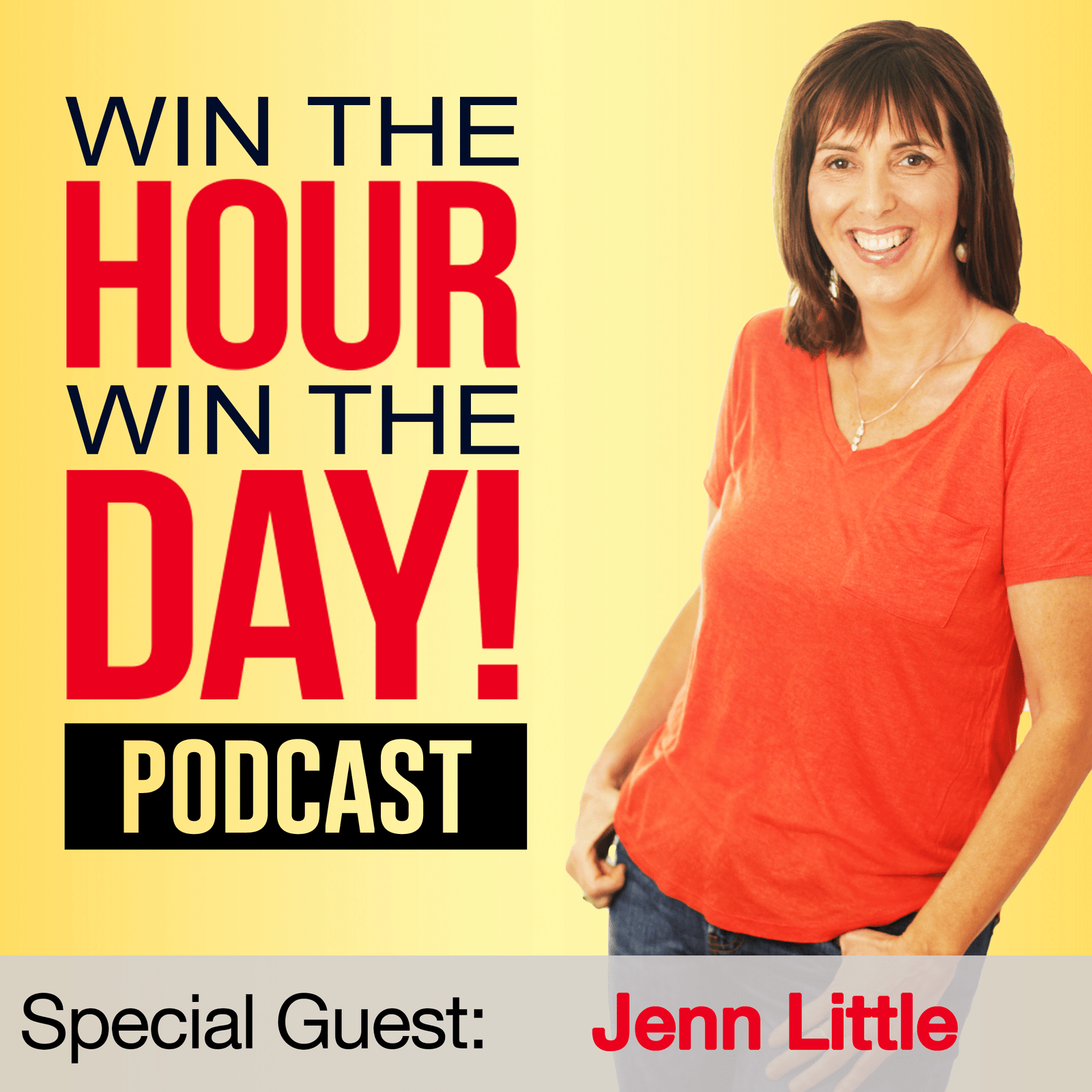
Are You Ready For Your Next Big Win?
Know your entrepreneur personality and I’ll take it from there!
Recent Podcast Episodes
Preventing Burnout with Smart Work Tools! with Kris Ward
Episode Summary This week’s episode of Win The Hour, Win The Day Podcast is...
Master Social Selling: Heidi Medina’s Strategies for Engagement
Episode Summary This week’s episode of Win The Hour, Win The Day Podcast is...
Boost Productivity and Master Storytelling! with AmondaRose Igoe
Episode Summary This week’s episode of Win The Hour, Win The Day Podcast is...
Master Video Marketing: Top Tips for Entrepreneurs with Dan Bennett
Episode Summary This week’s episode of Win The Hour, Win The Day Podcast is...
Boost Your LinkedIn Strategy with AI Tools for Enhanced Productivity! with Joe Apfelbaum
Episode Summary This week’s episode of Win The Hour, Win The Day Podcast is...
Mastering Personal Branding with NLP Techniques! with Olesija Saue
Episode Summary This week’s episode of Win The Hour, Win The Day Podcast is...
Innovative Lead Generation and Email Automation Secrets with Jennie Wright
Episode Summary This week’s episode of Win The Hour, Win The Day Podcast is...
PR Strategies for Diverse Entrepreneurial Impact! with Jennifer Singh
Episode Summary This week’s episode of Win The Hour, Win The Day Podcast is...
Convert More Clients on LinkedIn with Richard Moore
Episode Summary This week’s episode of Win The Hour, Win The Day Podcast is...
Master Business Growth on Pinterest with Meagan Williamson
Episode Summary This week’s episode of Win The Hour, Win The Day Podcast is...
24/7 Sales Boost: Video Marketing Secrets with Alex Sheridan
Episode Summary This week’s episode of Win The Hour, Win The Day Podcast is...
Master Public Speaking Tips with Nausheen Chen!
Episode Summary This week’s episode of Win The Hour, Win The Day Podcast is...
Beating The Burnout With Connie Whitman’s Success Story
Episode Summary This week’s episode of Win The Hour, Win The Day Podcast interviews,...
Craft Your Social Media Content Strategy With Shannon McKinstrie
Episode Summary This week’s episode of Win The Hour, Win The Day Podcast is...
Boost Your Productivity with AI Tools: A Deep Dive with Erik Fisher
Episode Summary This week’s episode of Win The Hour, Win The Day Podcast is...
Boost Visibility: Repurpose Content and Leverage Podcasts With Christina Lenkowski
Episode Summary This week’s episode of Win The Hour, Win The Day Podcast is...
Master Personal Branding & Storytelling with Lisa McGuire
Episode Summary This week’s episode of Win The Hour, Win The Day Podcast is...
Boost Business on LinkedIn with Catherine B. Roy’s Strategies
Episode Summary This week’s episode of Win The Hour, Win The Day Podcast is...
Scale Your Business: Optimizing Virtual Assistant Services with Kris Ward & Rachel Eubanks
Episode Summary This week’s episode of Win The Hour, Win The Day Podcast is...
Affordable PR Mastery: Crystal Richard Unveils Modern Techniques
Episode Summary This week’s episode of Win The Hour, Win The Day Podcast is...
Mastering Business Storytelling with JJ Peterson’s Guide
Episode Summary This week’s episode of Win The Hour, Win The Day Podcast is...
Revamp Your About Page: Guide to Personal Branding
Episode Summary This week’s episode of Win The Hour, Win The Day Podcast is...
LinkedIn Mastery and Video Marketing Secrets with Alex Sheridan
Episode Summary This week’s episode of Win The Hour, Win The Day Podcast interviews,...
The Systems and Processes Playbook: Insider Secrets to Streamlining Your Small Business with Leah Abunales
Episode Summary This week’s episode of Win The Hour, Win The Day Podcast interviews,...
3 Ways To Leverage PR To Grow Your Business! with Jenn Little
Episode Summary
Jenn Little shares tactical PR strategies that you can start today!
It’s a conversation full of solid takeaways.
Learn
-why you want an offensive and defensive PR Strategy
-the best way to leverage the media to grow your business.
-how to avoid the biggest PR mistakes
And MUCH more!!!
You can find Jenn Little at:
Email: jennlittlemedia@gmail.com
LinkedIn: https://www.linkedin.com/in/jennlittlemedia/
Facebook: https://www.facebook.com/JennLittleMedia
Win The Hour Win The Day
https://winthehourwintheday.com
Jenn Little Podcast Transcription
[00:13:43]Kris Ward: Hey everyone. Welcome to another episode of Win The Hour, Win The Day, and I am your host Kris Ward, but today we have Jennifer Little in the house and she’s going to talk to us about our PR plan. Yes, our PR plan for the year. Let’s dive right into it. Jennifer, welcome to the show.
[00:14:00]Jen Little: Thank you for having me, Kris. I’m so excited to get right to it. Or I’m talking about your PR strategy for 2022. And I have so many great takeaways that by the time we’re done, your audience will hopefully be able to implement them right away.
[00:14:14]Kris Ward: Yeah. Okay, so I’m just going to call you Jennifer. I think you are so brilliant that I don’t think this is going to be limited to 2022. I think we can move beyond that and it will be timeless. So let’s just go with a PR strategy that we can use any year. Excellent. Okay, where do we start?
[00:14:30]Jen Little: Okay, let’s start with batching. Let’s just put ourselves in the mindset that when we want to get a lot done and we want to be focused and we want to be intentional.
[00:14:39] When you batch like with anything, with food, with your exercise routine, when you batch and you put some deep thought in the front end, then you’ll get the results that you want that are intentional in the backend. So the first thing I would recommend is that you put together an annual PR plan. We were ever at whatever time of the year you’re starting from, and you map up by month and by quarter, what your overreaching, bigger messaging goals are so that you understand what you’re putting out to the world.
If you’re responding to journalists and you’re being quoted that you’re consistent and it’s all coming from the same mothership, the same place.
[00:15:19]Kris Ward: Okay, so let’s back up for a second. So a lot of people get intimidated with the idea of journalists or do I have enough to put out there and stuff? So when you talk about planning for the month and the quarter, give me an idea because we all tend to think, oh, I don’t have anything worth announcing yet.
It’s my next big thing. Or once I get that other thing done, so what are some things that we could put out for the month and the quarter.
[00:15:40]Jen Little: Absolutely. So one of the things that you want to do is you want to make sure that you focus on what your ultimate message will be, that you’ll leave to the world for the year.
[00:15:49] So if you want to position yourself, you’re probably very good at what you do, but there’s probably a lot of different people that do exactly what you do. So the first thing you want to do is to differentiate yourself at a real special way.
[00:16:03]Kris Ward: Okay.
[00:16:04]Jen Little: You want to make sure that you have that 32nd elevator pitch ready to go.
That’s been updated, but that’s also extremely unique to you. So I would start from there. Okay. And that has four components in it. So the first component would be, what is it about you that makes you very unique and different and special? So let me give you a concrete example. I could either say I am a social media expert.
[00:16:31] Who specializes in digital marketing. Okay, great. There’s so many of us out there right now, especially post COVID or I can say I’m a gen X-er with 10 plus years marketing experience smack dab in the middle of the baby boomers and the millennials. Okay. Now you have a real concrete idea of who I am in a very unique way.
[00:16:52] So the next piece to that 32nd elevator pitch. What you really want to hone in, because this is where everything’s going to flow from for the year. And it helps with all the other marketing pieces to fall into place. Okay. The second paragraph is okay, what problem do I solve best? And I know we’ve all heard this, so I could say I help your digital marketing be easier.
[00:17:14] Or I could say I provide social media solutions for brands by helping alleviate the daily posting anxiety. Okay. So versus being broad, you can see the pattern here from the first and second paragraph. First I’m broad, then I’m very niche. Okay. If you’re having a hard time kind of grasping the niche concept, that’s what this means.
[00:17:34] It means from being broad and saying, this is what I do to really thinking about your client, your avatar, who do you want to work with? So right now I am relating to Gen-Xers, Baby Boomers and Millennials. I’ve said them and I come right in between them. And that’s how I help them speak to one another. So I’ve identified myself, I’ve identified the pain point. Now let’s talk about the solution.
[00:17:58]Kris Ward: So let’s pause here for a second, just so I get it. So I think this is going to be rough. This is why we’d like to show people can learn as I’m learning. So, one thing I could say is, I have a couple of things I say ‘I help entrepreneurs stop working so hard’, but that’s pretty vague.
[00:18:13] So you can say, I really should have a business that supports your life instead of consuming it. I work with entrepreneurs. Service-based entrepreneurs who have been in business five plus years and are just tired of still working that hard. Would that be specific enough?
[00:18:27]Jen Little: That is specific enough. If you want it to show up even more throughout the year, you could target specific industries by month or by year.
[00:17:35]Kris Ward: Yeah. Okay. Got it. All right, continue. Thank you.
[00:18:39]Jen Little: Okay. The third paragraph then is the moment where you make your client. Now you pick, you showed the problem. Now, how do I, Jen little come in and help you with that problem.
[00:18:52] So this is the third paragraph and create a peace of mind in their social media space so that they can focus on the process of running their business. So I’ve now identified who I am and who I’m talking to. I’ve identified the post anxiety as the primary problem and identified that I come in and create a peace of mind with their social media and their daily posts.
[00:19:15]Kris Ward: Okay. So in my case, we’re just, and I’m not expecting to get this right. You’re trying to sound it out. As examples when you give them they’re excellent. Right? Cause that’s what you do. So in my case, it would be a…. sorry, say yours again? One more time.
[00:19:30]Jen Little: Sure. Do you want me to start from the beginning so we can kind of patch them together?
[00:19:33]Kris Ward: Sure. If you think so.
[00:19:34]Jen Little: Yeah, let’s do that. So it says, so I’m a gen X-er with 10 plus years experience in marketing, smack dab in the middle of the baby boomers and the millennials. I provide social media solutions for brands by helping alleviate the daily post anxiety. And I create a peace of mind and their social media space so that they can focus on the process of running their business.
[00:19:58]Kris Ward: So that last part of two questions out. So I could be saying I help entrepreneurs… Well, I believe when we call the WIN Formula, 60% execution, I help entrepreneurs live in 60%. Well, that’s too wordy, but the goal is getting them to the execution so that they’re not trapped in the web of admin. So they, whatever.
[00:20:18] Anyway, so I can find out that, but that big breadth that you just said as you put it together, now, that seems like a lot. Where would we be putting that out? Like, so that’s our big thing, but it’s a condensed, intense sort of a description. Where would that go?
[00:20:34]Jen Little: Great question. So, there’s one more small paragraph to add to that, and then we’ll finish off the thought and then I’ll tell you exactly what you put there.
[00:20:43] So then I end it with the long-term takeaway from the person that’s researching me, wondering if they should do business with me. Right. So the last little bit is short and not worry about looking irrelevant on social media. Oh, okay. Okay. So I would take this whole four paragraphs, probably about 400 characters, if that, and I would put it on my LinkedIn profile.
[00:21:12] Okay. I would put it on my, all my socials in my, about section. And that way there, when somebody says, what do you do? I once had somebody say to me, what do you do? Because I’m in marketing and that’s so broad. So wherever somebody is looking; your resume, your press kit, your social media platforms, make sure you have your 32nd commercial ready to go.
[00:21:38] And also in conversation. Whenever you’re starting, you can abbreviate this. If you’re having a zoom conversation and you’re speaking to your networking group or whatever, you don’t have to go all the way down that road. But after a while, it starts to roll right off your tongue. This is the first time you’ve heard it.
[00:21:53] And your audience has probably heard it after a few times of practice. You can start to tailor it a little bit, try to stay on point, but it really rolls off your tongue.
[00:22:02]Kris Ward: So I think what you’re saying here is in one hand, we’re talking about PR and I get that, but I know I’ve had friends in the past, where she was, you know, different friends, business friends that they were producer on the view or different things.
[00:22:13] And they have PR companies and their thing was, everyone thinks it’s especially, you think the idea is to get on TV, which that not, may not be where your audience is, but even if it was you get on TV, that’s great. And if everyone checks you out, you spend that time, money and energy getting on television, and then they check you out and there’s breaks in the bridge.
[00:22:31] So it just doesn’t work. Right. So what you’re saying is make sure these things are all there so that when you go out and we do put an effective PR place, a plan and a strategy, cannot talk, part a PR plan. I guess it’s a PR word PR strategy in place, slow down. We want to make sure that that work is going to pay off because we have consistency in our messaging.
[00:22:55]Jen Little: It’s like, I just threw you a softball and I’m so excited that you went there because that is exactly the reason why I started from this point. You have to have the mother message that everything stems from. And sometimes it’s really difficult to nail that down and be effective at it. We can see what we do, but the world has changed.
[00:23:14] I say, from the two dimensional to the three-dimensional, where you really need to connect at a higher level and it starts from the top. It starts from what you say out of the gates. And, once you have that nailed down, then you can make sure that your website and your social media platforms and what you’re saying on LinkedIn and on whatever your social is of choice, right?
[00:23:36] Everything is cleaned up and everything is consistent and streamlined with this mother message. So that if somebody Googles you and we’re going to bring it back around to press, we did a little bird walk, but we’ll bring it back to your PR plan. If someone Googles you. You want to make sure that they’re going to receive the same information, that consistent way across the board on anything digital that’s out there, including your socials, your website, and when you get quoted by press.
[00:24:02]Kris Ward: Right. Okay. So I might say sometimes, listen, we help entrepreneurs stop working so hard. And other times I might say, you really need, you know, we help people who want to have a business that supports her life instead of consuming it. But if those are different touch points in different places, even though ideally like the messaging is, is mine.
[00:24:20] We want to have that stack then layered and tight. So it’s the same, gosh, darn thing. Everywhere they go. Okay. Perfectly.
[00:24:29]Jen Little: Great. And then the other, so I have a couple of pro tips when we end up one conversation and I love sound effects. I’m in video storytelling, and I like to do this little.
[00:24:40] Okay. Got it. Anyone hears that throughout our talk? That means listen, because this is really good. This is the pro tip associated with what we just talked about. And this is on your LinkedIn about section. You have 300 characters that show up on a mobile device. If somebody looks you up on LinkedIn. Okay. So make sure those 300 characters work really well and make somebody want to stop the scroll and keep reading about you.
[00:25:08] Okay. Okay. And that all lines up to the mother message. And that’s good PR because if you’re going to pitch a journalist and they go to your LinkedIn profile, they look at your about section. It’s got to be really catchy. Great. So now I wanted to chat about getting into the weeds of actual PR. I see PR in terms of a defensive strategy and offensive strategy.
[00:25:34]Kris Ward: Interesting. All right.
[00:25:36]Jen Little: And so there’s the defensive strategy which I use a service called Help A Reporter Out. And if anybody’s out there in the PR world, they’re familiar with it. There’s two levels that you can use that software. One is the free service where you receive three emails a day, morning, noon, and night.
[00:25:52] It’s probably about 50 leads. Meaning that journalists are looking to find experts in different fields that they can quote and they can use. And they’re anxiously working against a deadline. And so you can sign up for free. helpareporterout.com and you will start to receive these emails. And then some of the time they’re pretty big publications and websites.
[00:26:14] There’s an entrepreneur magazine. I’ve seen Forbes as well as things like Buzzfeed and, Refinery 29 and things like that. So that’s a really great service. That’s defensive because the journalist is being very specific in saying, I want a chiropractor to answer these questions about somebody who is at their desk all day.
So they’re asking you to answer their agenda. So that’s defensive and it’s a great way to go about getting pressed.
[00:26:45]Kris Ward: I’ve used HARO. That’s the short form. H A R O. Yeah, absolutely. Okay, excellent. So that’s defensive. That’s a good… I never thought of it that way. Defensive. Excellent.
[00:26:53]Jen Little: And then there’s – offensive. Offensive is when you Google a certain category that you would just love to be the expert quoted. So you go on from a high level of strategic thinking and say, God, I’d really love to be quoted in Prevention Magazine in regards to maybe it’s overwhelmed, resume fatigue. And so you Google that exact category and you look for articles that have been recently written by journalists.
[00:27:19] And magazines. And you find a journalist that has recently written about that exact thing. Then you reach out through, you go to LinkedIn and you search that journalist. And most of the time they pop up and now you have a direct in an inroad every single time. Most of the time I use this strategy, I get an answer back and the strategy is this.
[00:27:42] You simply say, “Hi, I’d love to write. I saw your article about this and really enjoyed it. I have experience in this area. If you want to collaborate at some point, I’d love to be featured and help you write another article or be featured as an expert or quoted. I have some ideas behind this exact topic”, and you direct message that journalist.
[00:28:04]Kris Ward: Okay. First of all, let’s stop for a moment and ring the bell. Ding, ding, ding, ding. All right, hold on. I always say to people, is often the most simplistic stuff. Like sometimes, you know, something over here and then you don’t realize it applies over there. Like, oh my gosh, I do that over here.
[00:28:21] Why don’t I do that over there? Okay. So that is so amazingly simple. And when I say that, I say that with great respect. Okay. So here’s the thing. Right. Now, cause I’m all about… Then you’ve complimented, then you let them know you’re doing the work and you’ve made a connection. Like what’s there not to like about you when you’ve done that.
[00:28:38] Now let me backup for a second, sometimes though, let’s say, okay, I’m going to write about burnout and how you could stop it or stopping a sufferpreneur. You need a team. Where also, could I go, like sometimes then you just, you get stuck in your thinking and you look up at the ceiling. You’re like, okay.
[00:28:54] Because so often what I find too is you get Google stuff and articles come up that are just ridiculous, right? Like, there’ll be like, there’s so basic. And junior, like I bought a new house and it was in the country and it was like, Hey, all the things you need to know to take care of your country home in the spring.
[00:29:08] And one of them was changed your thick blankets to thinner blankets in the summer. Well, like a toddler would have figured that out. Like, oh, I’m hot. What can I do? Right. So there’s all that junk that comes up. But is there, if I now wanted to say, is there a way to be more effective in searching entrepreneurial magazines or be more finite about that? If I don’t know what I don’t know.
[00:29:30]Jen Little: Yes. Great question. So the next offensive strategy would be to Google the publisher or editor or a podcaster or television executive producer. Depending on what media of choice you’d like to be in front of. And you feel most comfortable with. Google that person. I mean, search them in LinkedIn for you can search through LinkedIn organization like entrepreneur magazines and actually look up the people.
[00:29:56] There’s a tab for people. Okay. Okay. When you hit the tab for people, you can get right to the editor. I did this with an authority magazine recently for clients and it was an authority magazine and it was.. his name was Yatesy. I never had met the man. I did a direct message to him. He is this chief editor, and this is the script you use.
[00:30:17] You say, I speak about this and I have experienced, maybe you’ve written a book, maybe you’ve bet and mention that you’ve been in other press. If you have mentioned your website, whatever you have that can weigh heavily in terms of authority in the field. And then you say in the direct message, you say, can you point me in the right direction to whomever is contributor for your media that I could offer some thoughts on.
[00:30:43] Okay. So what editor in chief, who they’re hungry for content, they’re always looking for content. So what you’re doing and people like to help people in general. So you have something that might be they need, make sure you state your authority place first, whatever you lead with that sets you apart from others in that you’re an authority on the subject.
[00:31:03] And then say, can you point me in the right direction? They will come right back to you. And you’ve beat… you cut through all of the email clutter. Think about all the emails they get, but when you come in direct message LinkedIn. Yeah. LinkedIn has really done a turnaround. And so people pay more attention to that since we’ve all been in our homes and it doesn’t feel spammy because you’re coming in and saying, I’m a contributor, I’ve written a book.
I feel like I could contribute something to your publication, your podcasts, blah, blah. Could you point me in the right direction?
[00:31:36]Kris Ward:Yeah. Okay. Awesome. And then one thing leads to another. So let’s say, you just said, okay, I got entrepreneur magazine and then obviously, even Google is going to help you because once you check that out, they’re going to start sending you just by virtue of your search, other magazines that are parallel to that.
Okay. Awesome. All right. This is spectacular. Keep going. Don’t let us let you, we don’t want to slow you down.
[00:31:55]Jen Little: Okay, let’s go. Let’s go. So then let’s talk about. Wonderful. You’ve made your connection either through defensive or offensive. And now you want to build a relationship. This is when the rubber meets the road, so they might pick you.
[00:32:07] They might not, but now you have a name, make a spreadsheet and compile a list of journalists so that you don’t have to go back and dig and figure that out and go in your emails and your history or your LinkedIn messages, create a spreadsheet as part of your PR plan and build these relationships with these journalists or podcasters or meeting outlets.
[00:32:26] Once you build this relationship, you need to give them something more. Say you come in and you like some of their social media stuff. You like their articles. You have like this little master list of journalists, maybe it’s 10 to 20 strong that you keep kind of dripping on and making sure that they understand that you’re out there. And you’re very interested in what they do. Then you can forward to them a press kit.
[00:32:51]Kris Ward: Now, hold on, let’s pack up for a second. I get the whole maintaining the relationship. That’s really important. I actually have a spreadsheet just called Kris’s Network. Where in the past, like if you don’t keep track of this, you have these relationships that fall off the feed just by social media doing their job.
[00:33:06] So I get the concept. Excellent. Now, how do we do that with them? Is it by just making sure we like their posts on LinkedIn, following their articles, checking from time to time. Hey, that last thing you wrote was really good. Just networking with them and making it a sincere relationship. Is that what you’d suggest?
[00:33:22]Jen Little: Exactly, exactly. It’s as if you walked into a chamber event or BNI or something like that, women in leadership group, and you want it to make genuine connections. And when you get that business card, you wanna follow…
[00:33:35]Kris Ward: And talk to them like humans. Got it. All right. My apologies. Continue.
[00:33:39]Jen Little:That’s perfect. So then this is what I.. I love this part where the press kit and we’re going to do another ding.
Okay. I love this one. This is: take your resume and make it bougie. Okay. And you have a press kit. And what does that mean? It means instead of a text heavy, only document that has all of those short phrases that are extremely business oriented, make it a little bit more personal and make it very, very succinct.
[00:34:08] A one pager. Sometimes it can be a two pager depending on the outreach. And what you want to do is you want to fill in more than just your work credentials. Okay.
[00:34:21]Kris Ward: So is that like your one-page you’re like I have a one page or topics I could cover that kind of thing. Okay.
[00:34:26]Jen Little: Exactly. It has your brand colors. Make sure your brand is true to brand.
So your font, your brand color, your headshot. And then maybe this is a good spot to put that little 32nd elevator pitch. So, this is what you send out as an attachment after you have created a relationship with a member of the press.
[00:34:49]Kris Ward: Oh, okay. Okay. So after I’ve been nurturing them, what does that look like? Three months, six weeks. I know it varies depending on how much contact you have with them, but when is an appropriate time to do that?
[00:35:02]Jen Little: I would keep it within a month. I would keep it really tight. And I would say something clever. I tie it to something else. So I’ve reached out to you and I saw this article and it was really great.
[00:35:17] And it got me thinking about and think about something that you could contribute to or that piece, a concrete example. There was a travel agent I worked with. We’re approaching the mid-summertime of 2021 and she wanted to make sure she was relevant. So instead of like, what are you planning for your multi-generational family vacation?
[00:35:38] She said, what spots are open now Post COVID? And she knew what to say. And that was very interesting. So she got the story. She sent her press kit, her one page, her bougie resume.
[00:35:56]Kris Ward: She’s an expert in the field saying, look, nevermind combing everything in all the different locations here.
I’m an expert in the field. And I will tell you, this is what’s happening to the tourists. This is where you can go.
[00:36:07]Jen Little: Exactly. And that journalist, they’re working on a deadline, right, Kris. So they really just need that press kit. The abbreviated, one pager, because if they want more, you can create a multipage Prescott.
[00:36:17] That’s another conversation for another time. But to get that precedent right away, because at the end of the day, your goal is to say as, as seen on. Yeah, as heard you want your media ticker. So getting that turnaround quickly, having that one pager, that’s really nice that the journalists can look and say, okay, they wrote a book, they have a master’s, they worked here, whatever it is. I got another jet. I’m going to call them for more quotes.
[00:36:42]Kris Ward: Excellent. Okay. All right. We got a couple minutes left. I, oh my gosh. She’s going so fast. What do you want to squeeze in, in the last three to five minutes?
[00:36:51]Jen Little: Excellent. So the last 35 minutes, I would just say that when you’re pitching. So when you’re in the offensive mode and you’re pitching an idea that you just love, keep it very short and concise.
[00:37:00] Make sure you have three bullet points. Okay. So three bullet points. Don’t write this long, long, long thing, have three bullet points. That’s a paragraph to two paragraphs long maximum. Include your headshot include your link and include your call for action, because what’s great is you don’t want to appear like you’re being salesy, but you do have that 10 to 15 seconds at the end of anything that you can close out that’s acceptable so that you can actually say, it’s kind of like when the weather is brought to you by.
[00:37:32] To do that, to all of your pitches, you can give the substance and the three bullet points have your contact information, but then say for more information, reach out to X, have your call…
[00:37:45]Kris Ward: To be clear. This is all in copy. This is all in text. We’re not saying..
[00:37:48]Jen Little: In texts, all in texts, if you’re on a podcast, feel free to have that at the end as well.
[00:37:55] Don’t be afraid to draw that audience, leverage the audience that you’re with. If it’s okay with the host and it’s okay with a media outlet, they’re going to see your talking points ahead of time. Just add that and then make sure it comes back to you. And that’s another way to leverage your time spent with media.
[00:38:11]Kris Ward: Right. But what I mean is if you’re doing that pitch, we don’t want to send a video because that’s extra work for them to open the video. We want it written, correct?
[00:38:19]Jen Little: Correct. The text. It’s just one sheet. Yep. In an email or an attachment. Yes.
[00:38:24]Kris Ward: Awesome. This is stellar. All right, we’ve got one minute left.What do you want to, what do you want to throw at us?
[00:38:30]Jen Little: Don’t be afraid once you do get that press because your audience is brilliant, Kris. Don’t be afraid to shout that acknowledgement that quote from the rooftops on all of your social media, be the number one journalist for your business. The one number one advocate.
[00:38:48] Sometimes we forget about that. I’ve got one-on-one calls with brilliant women doctors, and they’ve been quoted in Newsweek. And I said, have you told anybody that? Have you shared that? They’re so busy doing what they’re doing. Anything that you do. We’ll leverage that and position that on social media, it’s an achievement. So make sure you put yourself and your business first.
[00:39:10]Kris Ward: Oh, Jennifer, this has been a blast and it went so fast. I have to say, okay, that was really good. We have had other PR people here, but I just, this is a very, effective, doable, strategic blueprint that also doesn’t leave… you know, like you really can take the initiative to this and lay this out.
As you said, defensively and offensively spectacular. Jennifer, when people want to find more of your brilliance, where would they find you?
[00:39:29]Jen Little: So I’d love it if you direct message me right on LinkedIn, I’m Jenn with two Ns, little media.
END[00:39:41]Kris Ward: Excellent. Jen, thank you so much. We, so appreciate you. Everyone else, we will see you in the next episode.[00:39:48]
